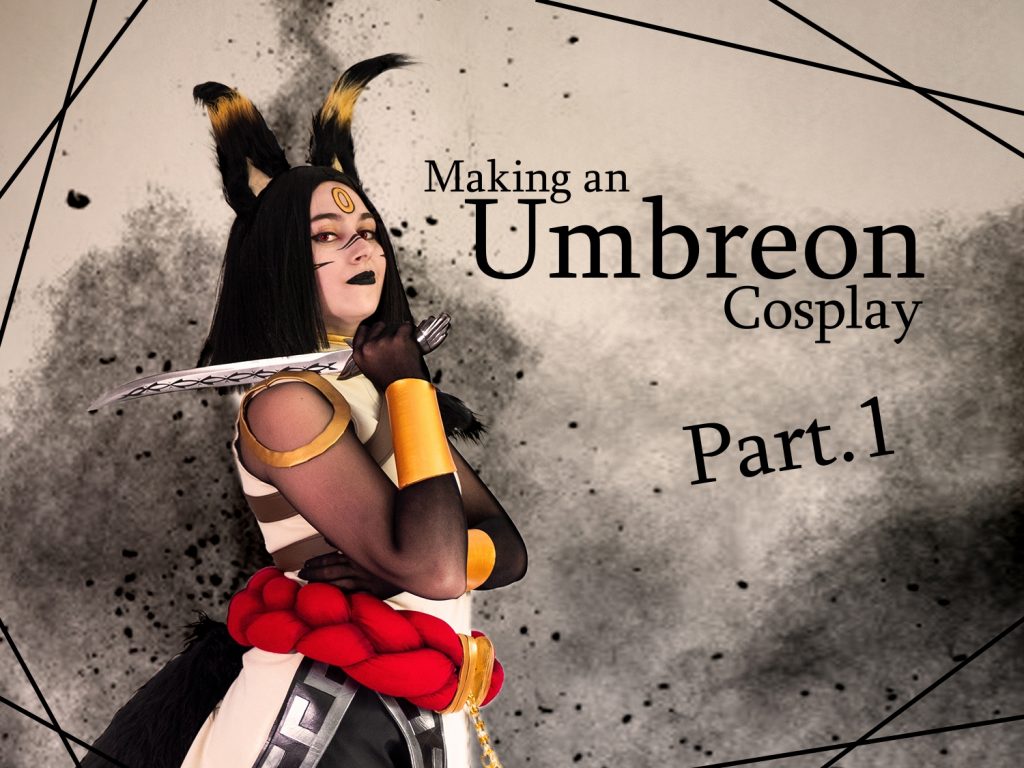
Hello to you ! Here we are today to talk about the making of my Umbreon [Pokémon] cosplay! For this costume, I chose to follow the design created by Dollightful, an artist transforming classic dolls into brand new unique characters. When I discovered her work, I found her Umbreon design absolutely fantastic and interesting to make! And the little bonus: two versions for the price of one! The male version is still being created, but duo photographies are planned. (A complete group including all designs is even in the plans!) ♥
My reference was therefore the following throughout the creation of my costume:
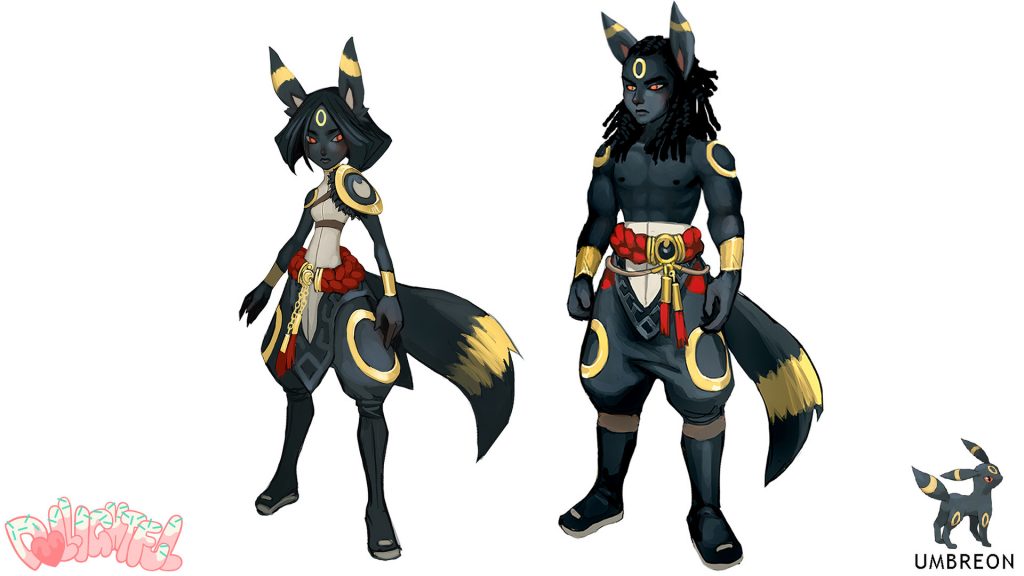
For the readability, I have chosen to divide this article into two parts.
In this first part, you will find the following chapters:
1 • The dress
2 • The pants
3 • The tail and ears
In the second part will be the chapters concerning the belt, the armors and the final result! ♥
1 • The dress
The shape of the clothes in this design is quite atypical, but that’s what makes it interesting to work on! I found the perfect color for the dress in my fabric box. Awesome! Now it’s time to patronize. Not knowing how to patronize in a conventional way, I choose to use the shape of a tank top in my wardrobe that perfectly matches the shape of the top of the dress.
I am also thinking of tightening at the waist so that the dress is quite tight! (the tank top being a bit wide for me, I preferred to adapt it. ♥)
For the bottom of the dress, I trace the shape by hand after taking a few measurements! (my apologies to the dressmakers who read me for this affront 😂)
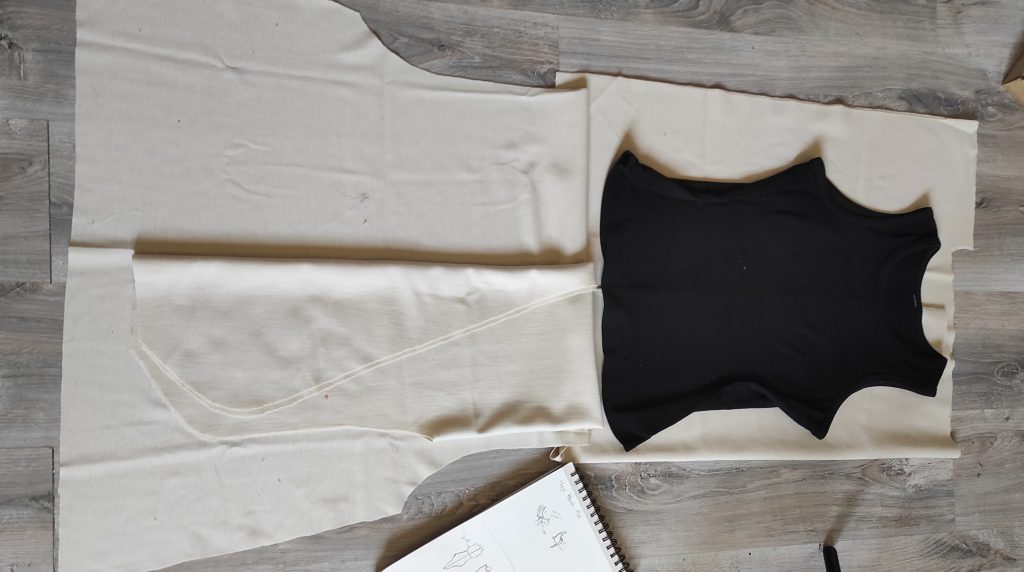
SEWING TIP: If you don’t know how to patronize, you can use the shape of a clothing you own (which is more or less what you want to get) to help yourself! To do this, turn the clothing over to make the seams visible, then place it flat on your fabric / paper (pin it if necessary!). Then trace the outlines and repeat for each part of your clothing. Do not forget to take into account the seams so as not to end up with a clothing that is too small once sewn 😉
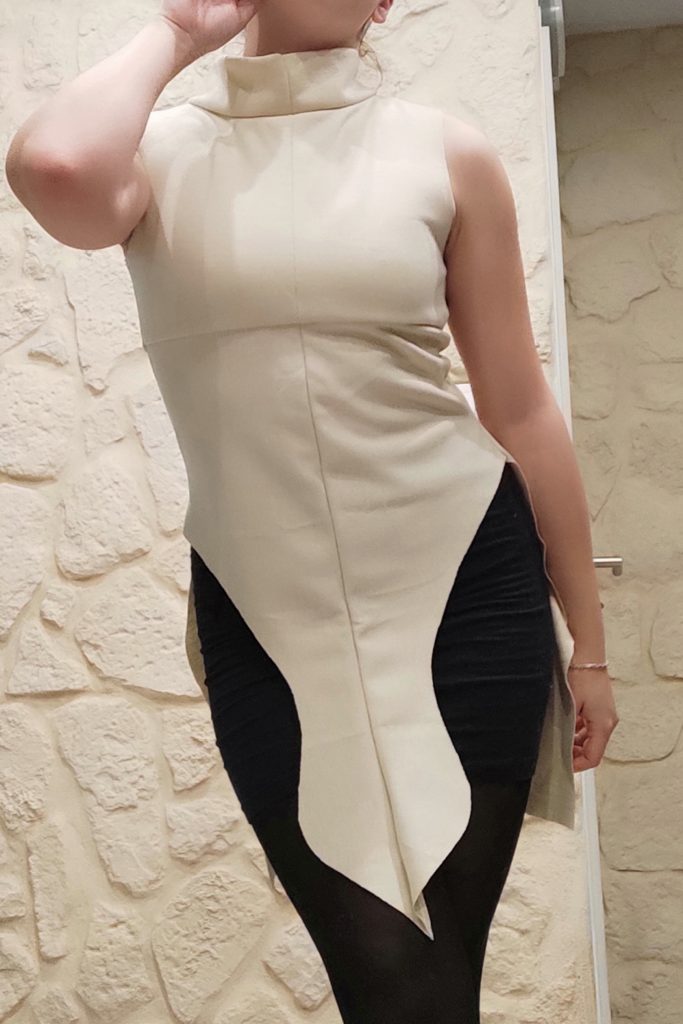
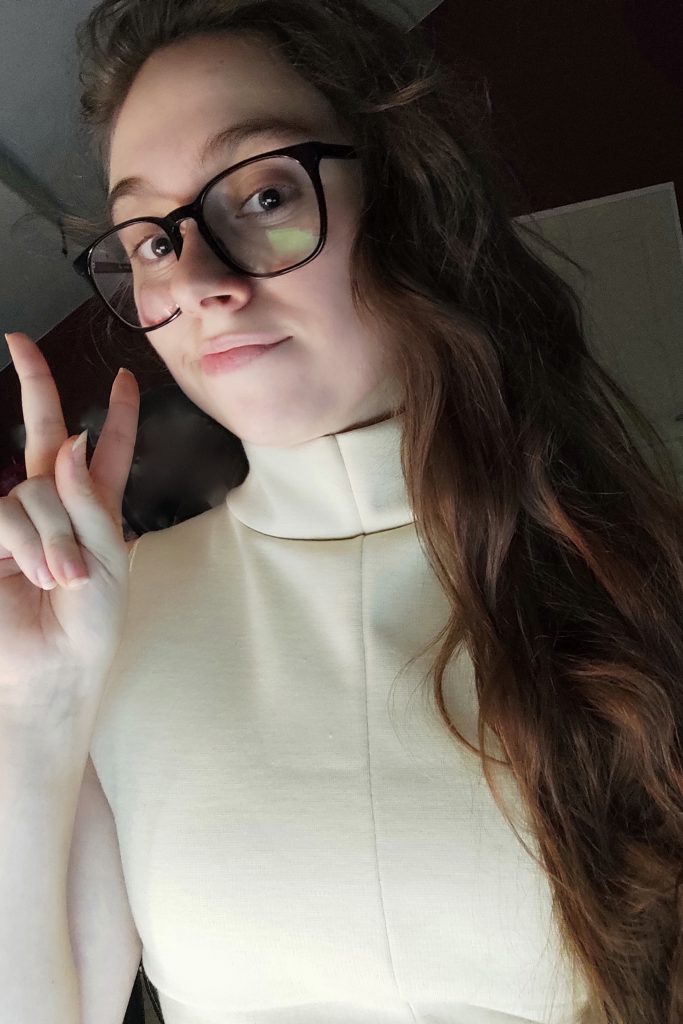
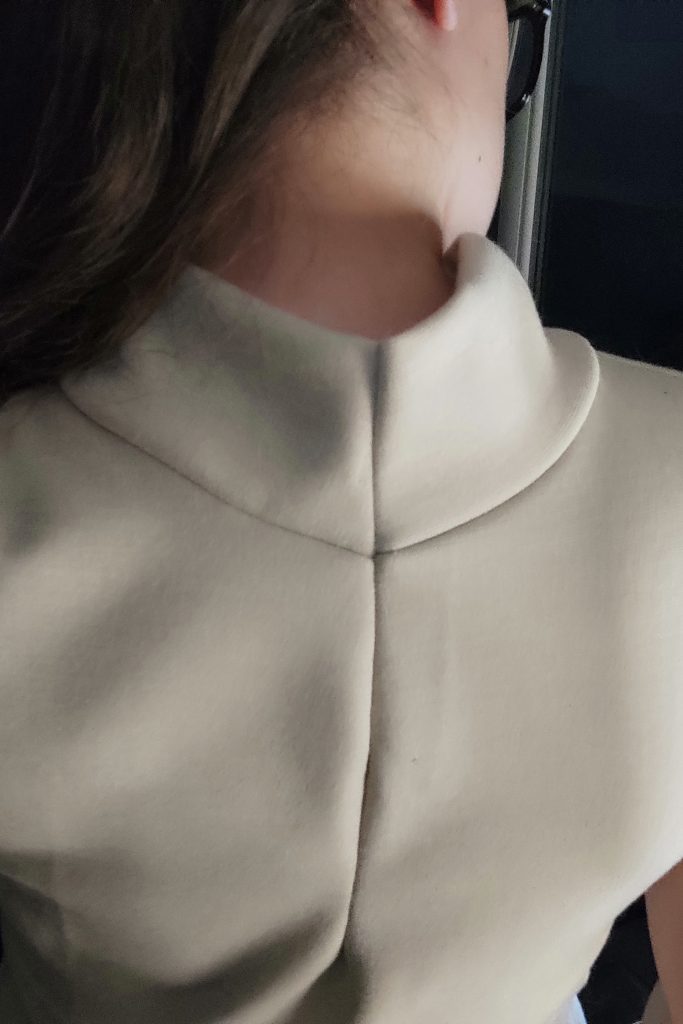
I also choose to make a lining for the entire upper part of the dress. Question of solidity, cleanliness and above all the transparency of the fabric! 😆
To be more accurate to the reference, I also added 1cm during the patterning to allow me to recreate the seam all along the center of the dress. A small detail that was important! ♥
Next step: the golden edges!
For the collar and the shoulder pads, I choose to use the Luxor golden soft imitation leather from Ma petite Mercerie, a fabric that I have been one of my favorite of since I discovered it. It has a beautiful texture, is very flexible and has an amazing color! ♥
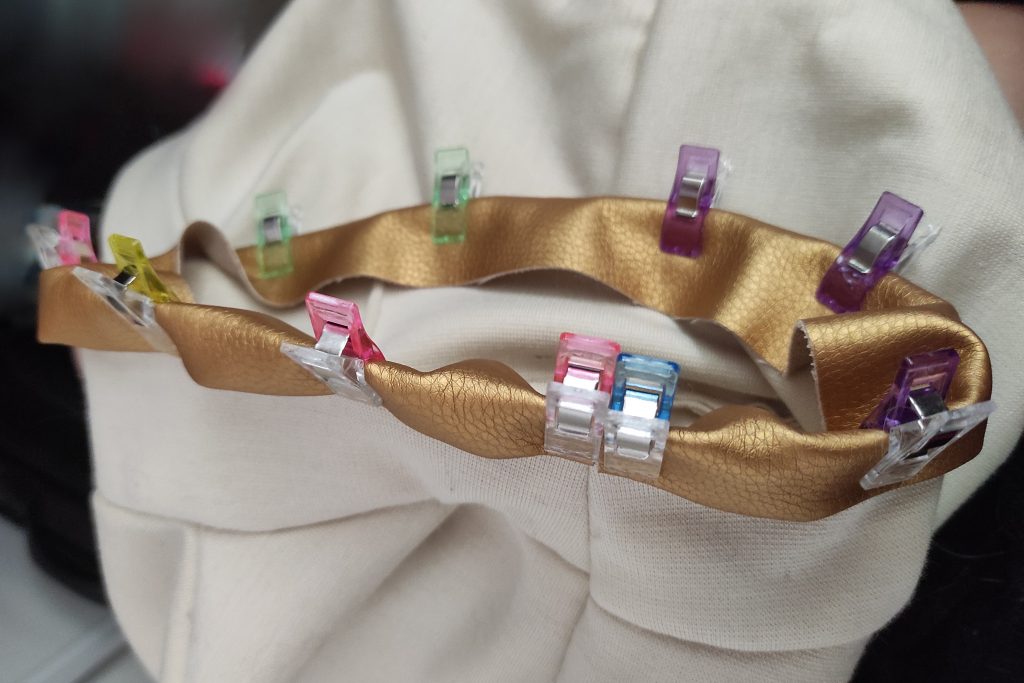
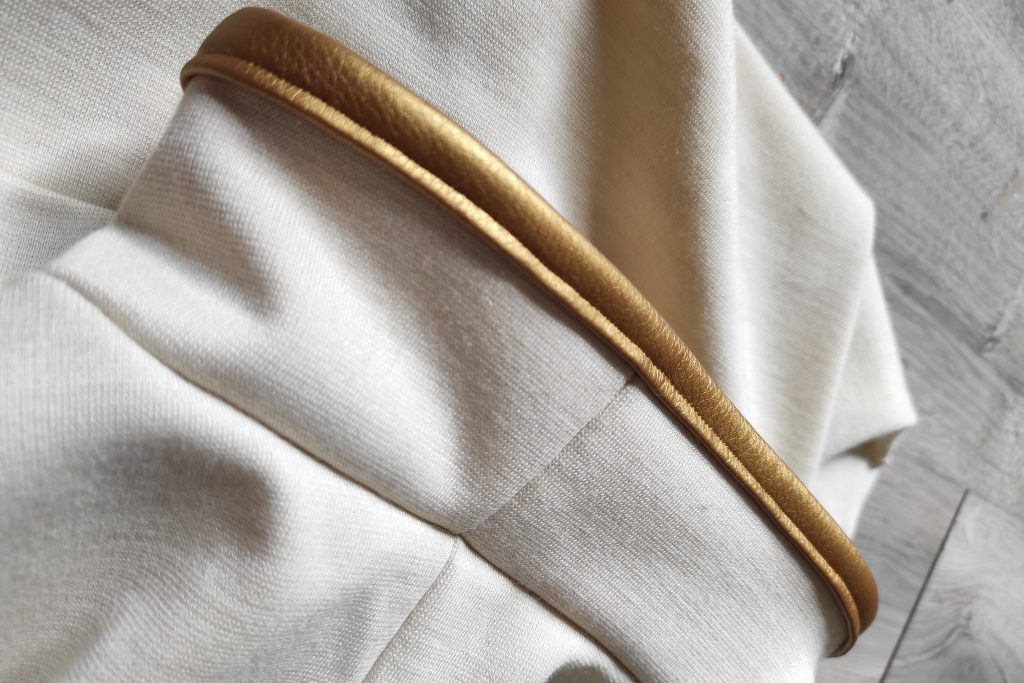
For the circles at the shoulders, I choose to wrap EVA foam (a material widely used by cosplayers for its flexibility and ease of work!) in 2mm thickness to give shape and rigidity to my fabric.
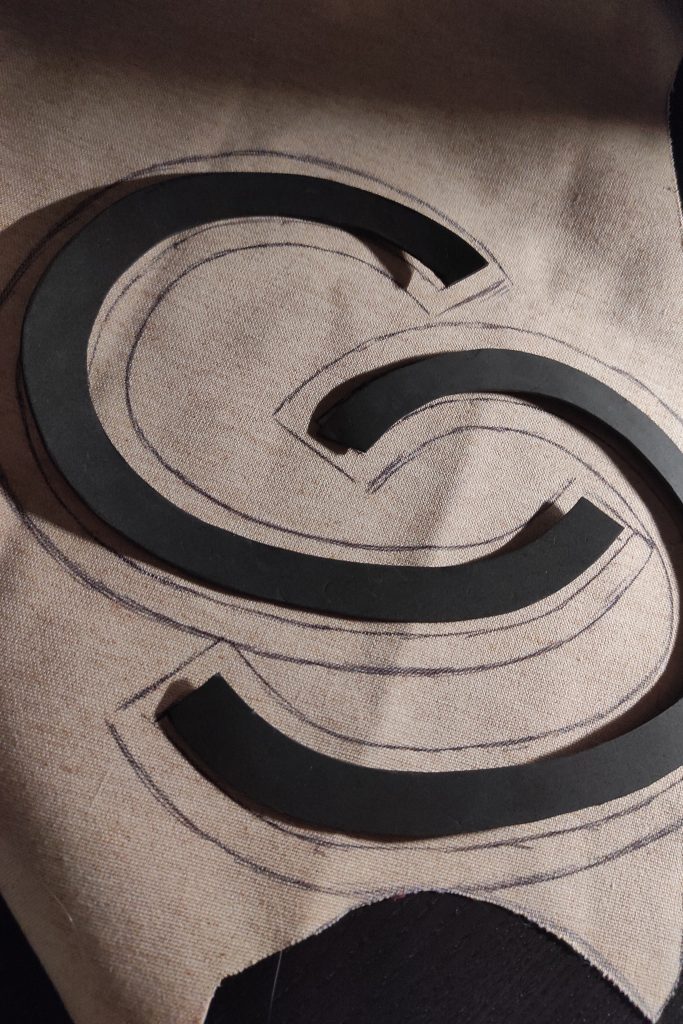
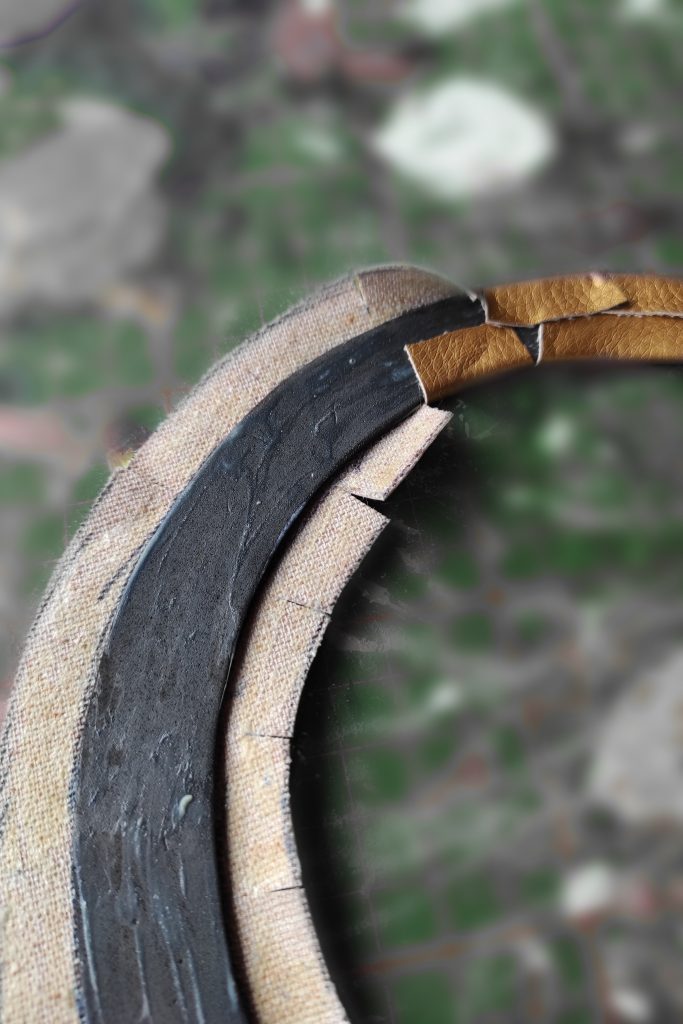
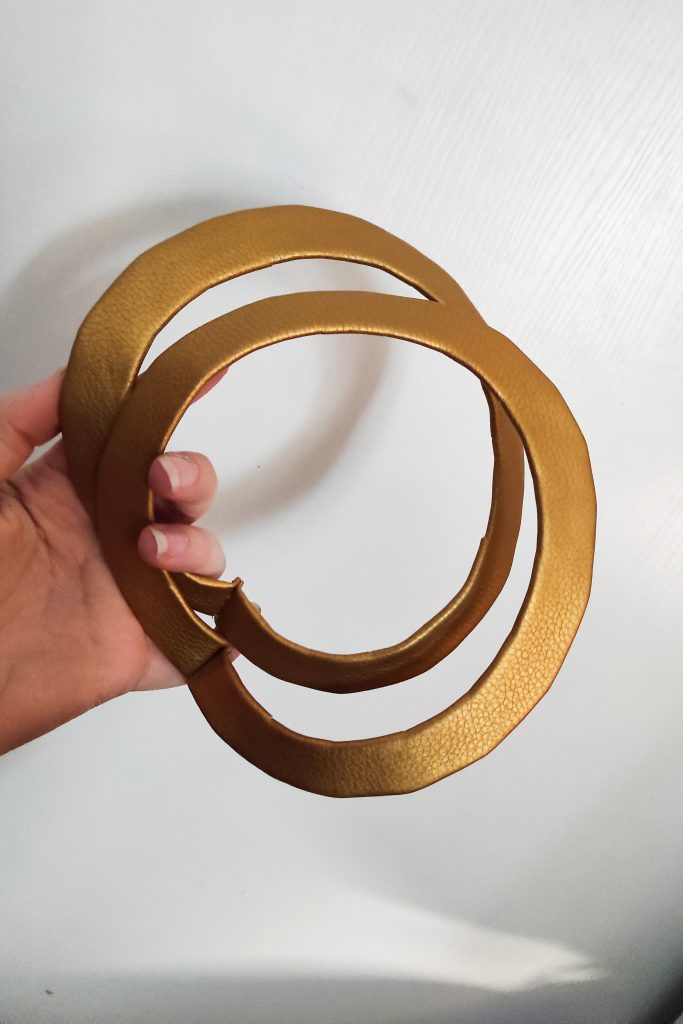
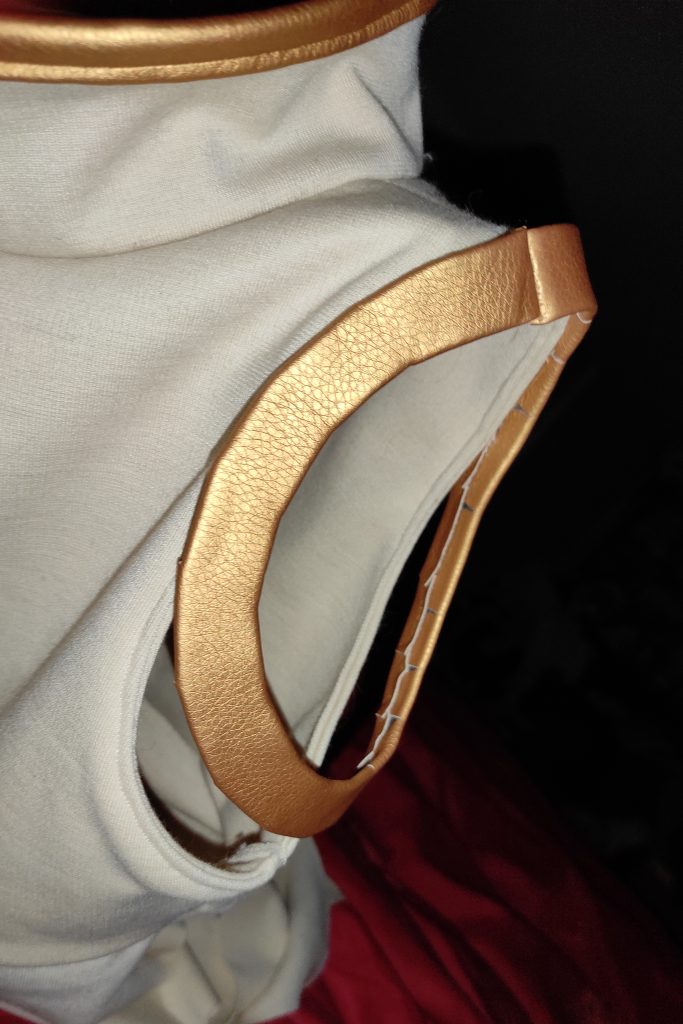
CRAFT TIP: To easily create special shapes with fabric, you can cut the shape you need out of EVA foam and then wrap it in fabric! When cutting the fabric strips, remember to add the thickness of your foam + about half the width of your strip to cover the other side. Also remember to cut the margins at the curvatures to facilitate gluing (see photo n°2). To glue your fabric on the foam, I advise you to use neoprene glue (or contact glue). This will allow you to take your time and have a clean and smooth result.
For the belt and the fastener of the armor present on the shoulder (which we will see later), I use the brown Nilo imitation leather from Ma petite Mercerie! I had never tried it but it turned out to be perfect for what I wanted to do. ♥
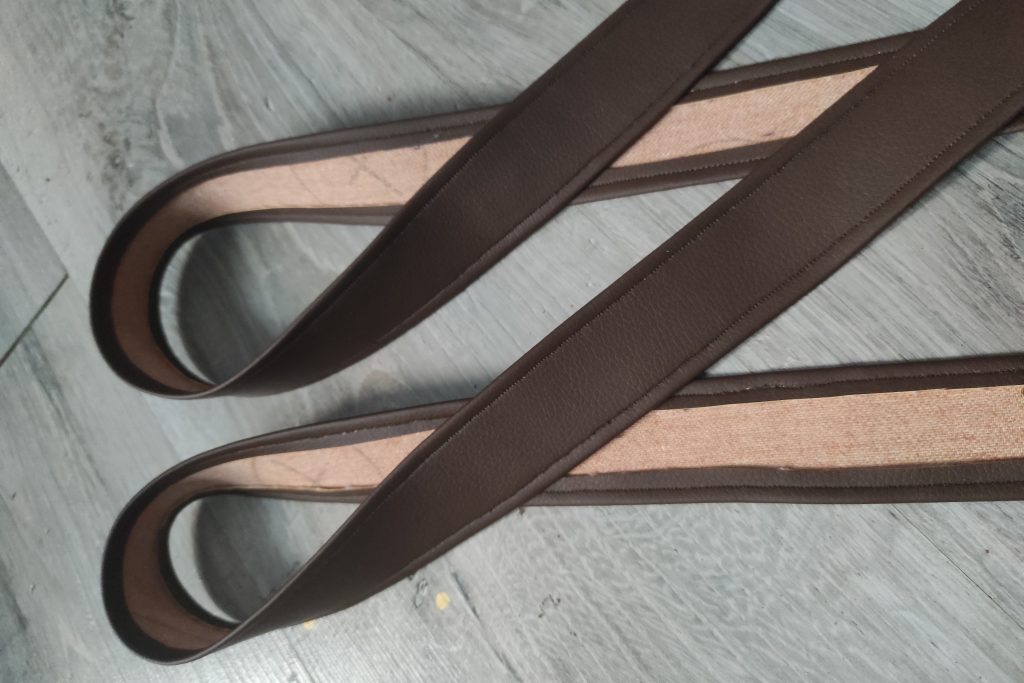
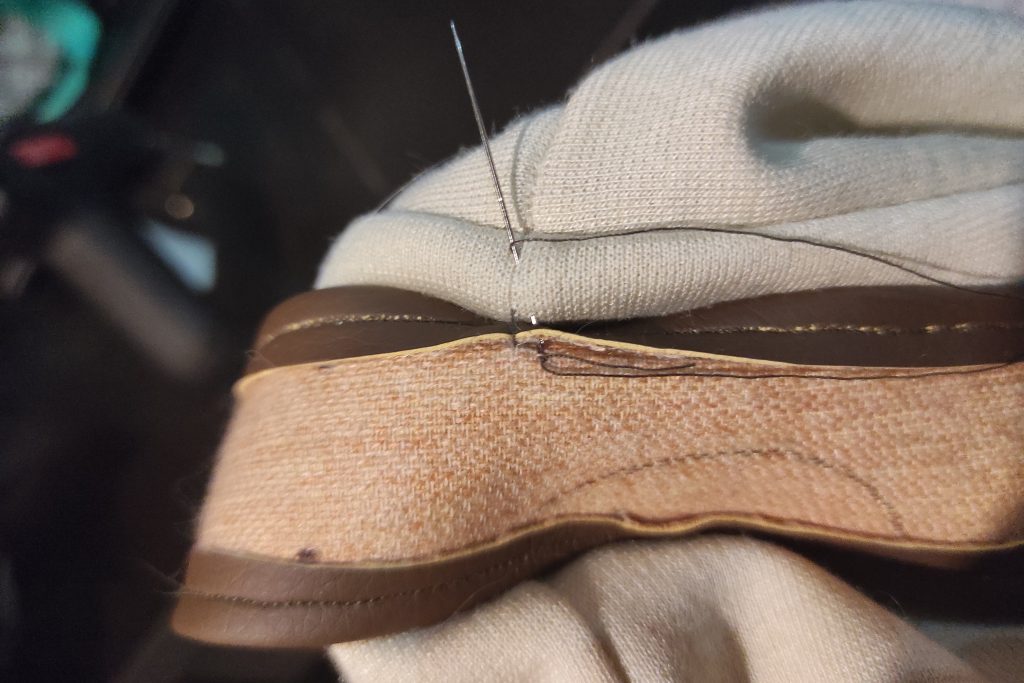
So I cut two strips of the desired length by adding a few centimeters to the width so that I can fold them back and sew along each
Now let’s work on the decoration of the bottom!
I thought long and hard about how to make it out of fabric but.. I couldn’t find a way to do it properly and this step was blocking my motivation for the project a lot.
So I simply turned to EVA foam! (2mm thick, to keep flexibility!)
After redrawing the shape of my fabric on paper, I add the decorative part. A few foam cuts later, the basic shape is ready for the next step!
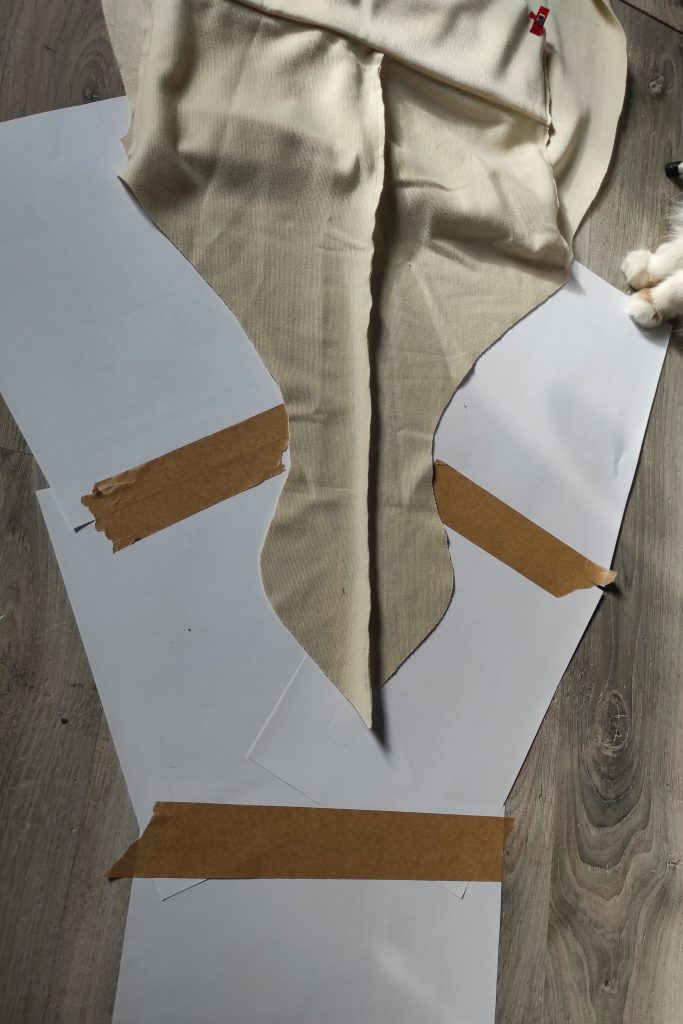
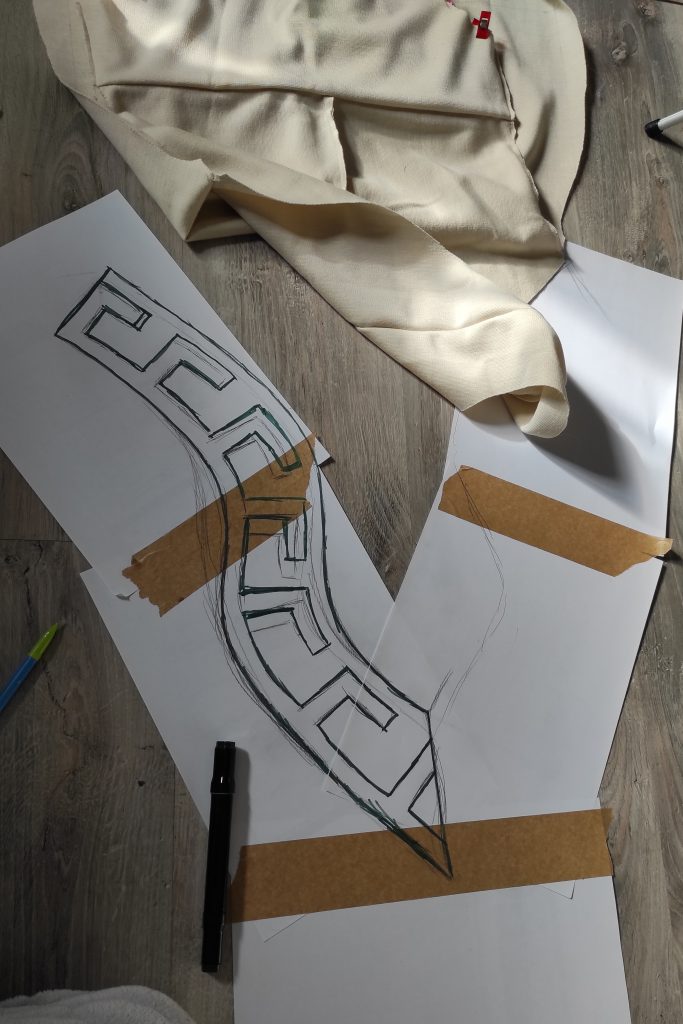
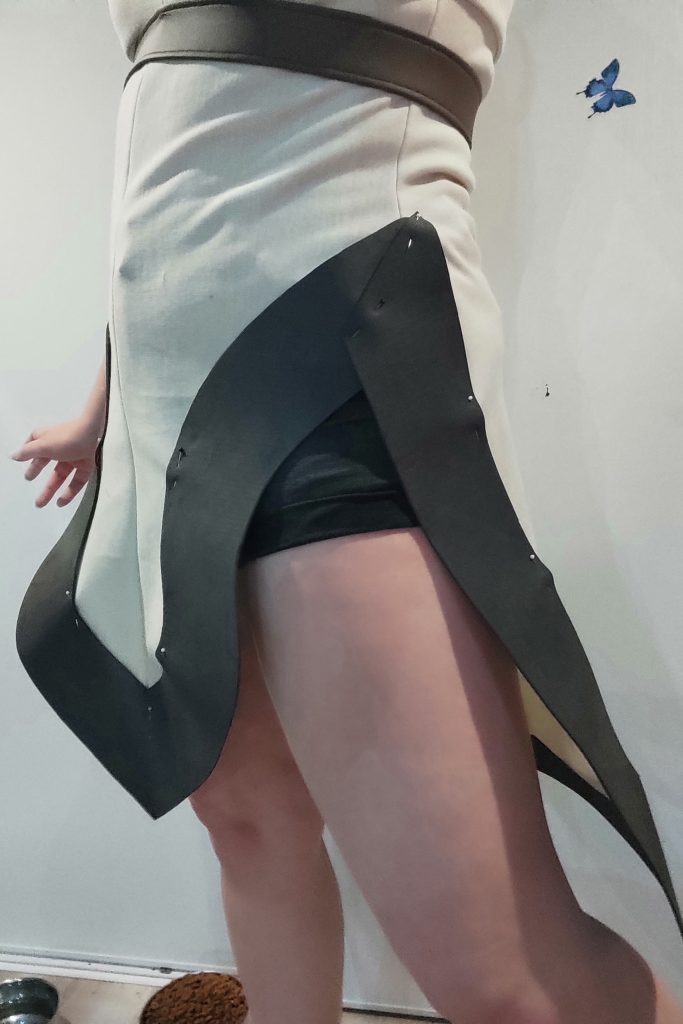
The foam being very thin, I’m afraid that a single line of glue will not be enough to do the job for a long time. I also want it to be clean on the reverse side as it will show off slightly so I cannot add a reinforcement strip. So I choose to.. sew my foam. 😆 A technique that is perfect for what I need!
I also reinforce the whole with a few dots of strong glue on certain seams. (you never know what can happen during a shoot! I prefer to be as secure as possible 😋)
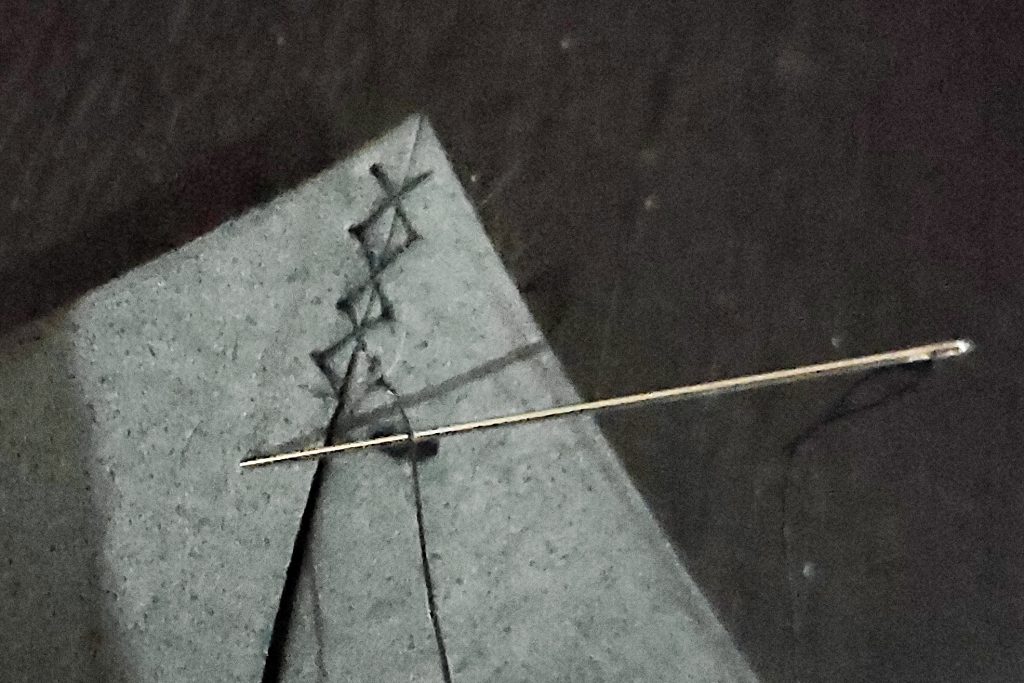
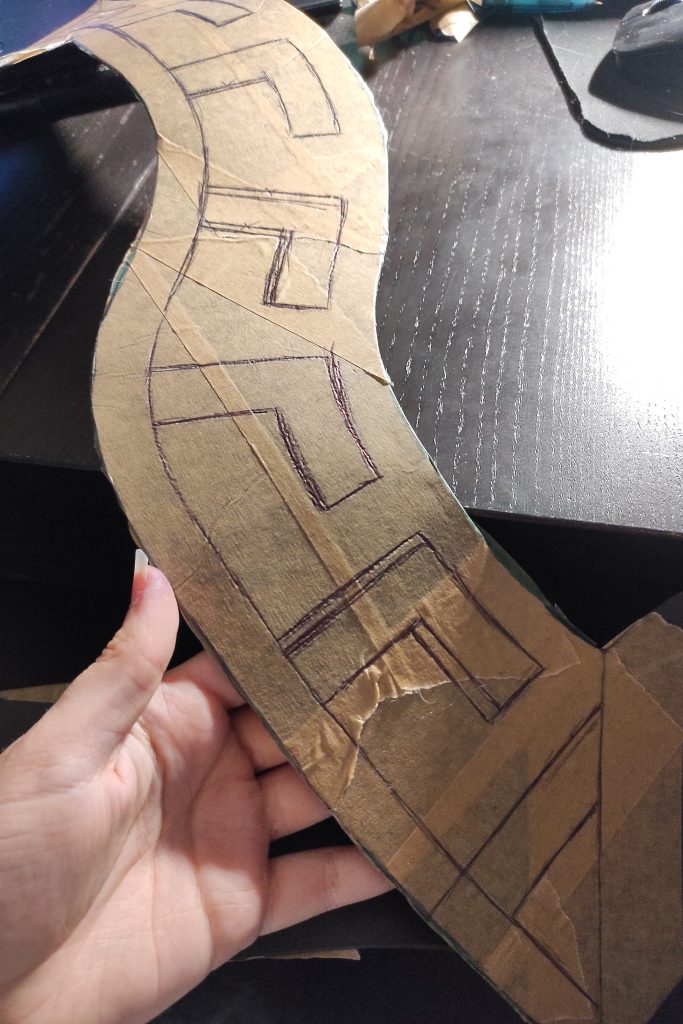
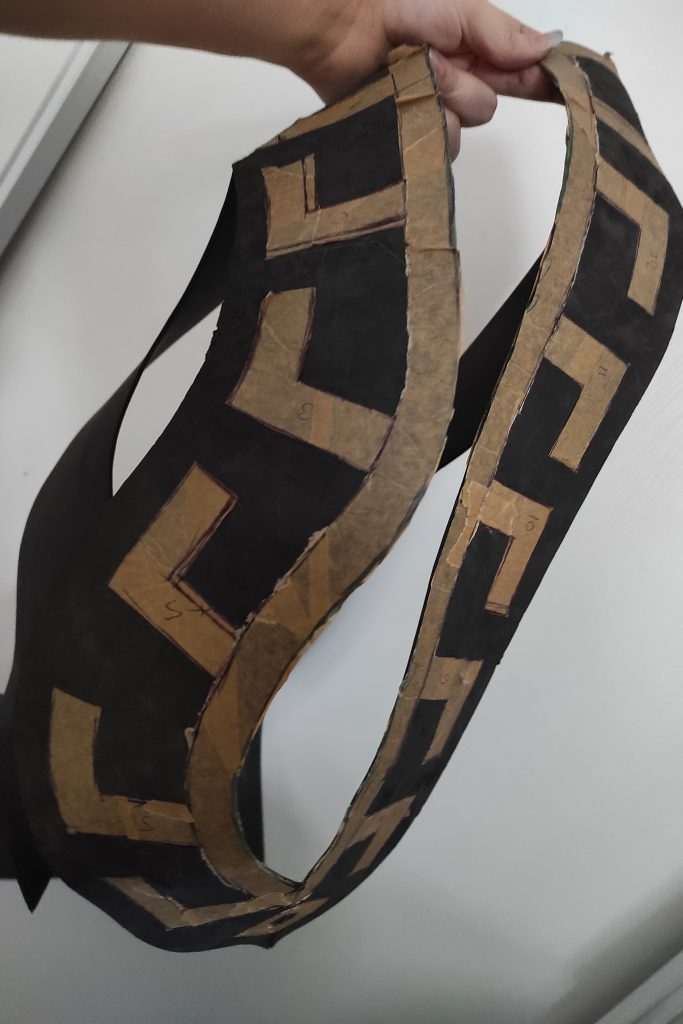
For the details, I initially wanted to glue/sew pieces of silver imitation leather, but in the end I chose to use foam for the relief!
In order to make sure I have the right size pieces, I prefer to patronize every detail directly on my foam pieces. I use masking tape for this (a low-adhesion tape designed to easily hide certain parts during a painting job. It is very easily removed and therefore does not stick or very little to the paint).
After covering my pieces with this tape, I draw every detail and cut them out then glue them back onto the foam to check if it suits me!
There comes a long moment of cutting out every detail in the foam. Once cut and numbered, I pin each part to its location then glue them one by one with neoprene glue! (PLEASE, when using contact/neoprene glue, remember protect yourself and your pets by wearing a respirator and putting your pets in another room!! Contact glue vapors are really bad for our lungs.)
I must admit that I really like the result. ♥
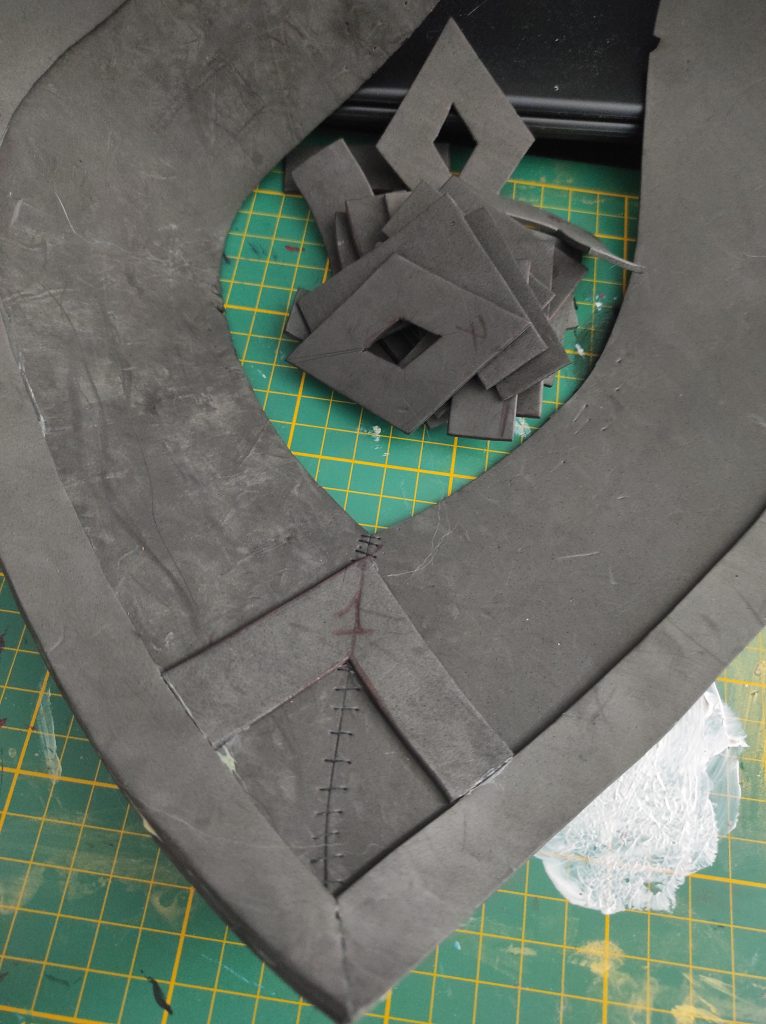
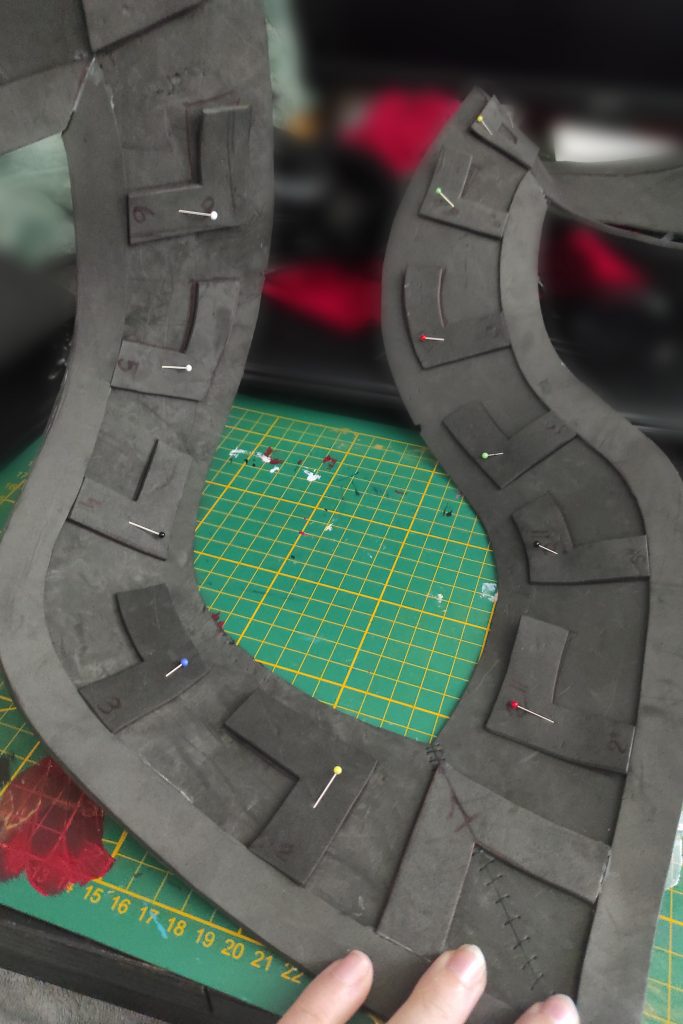
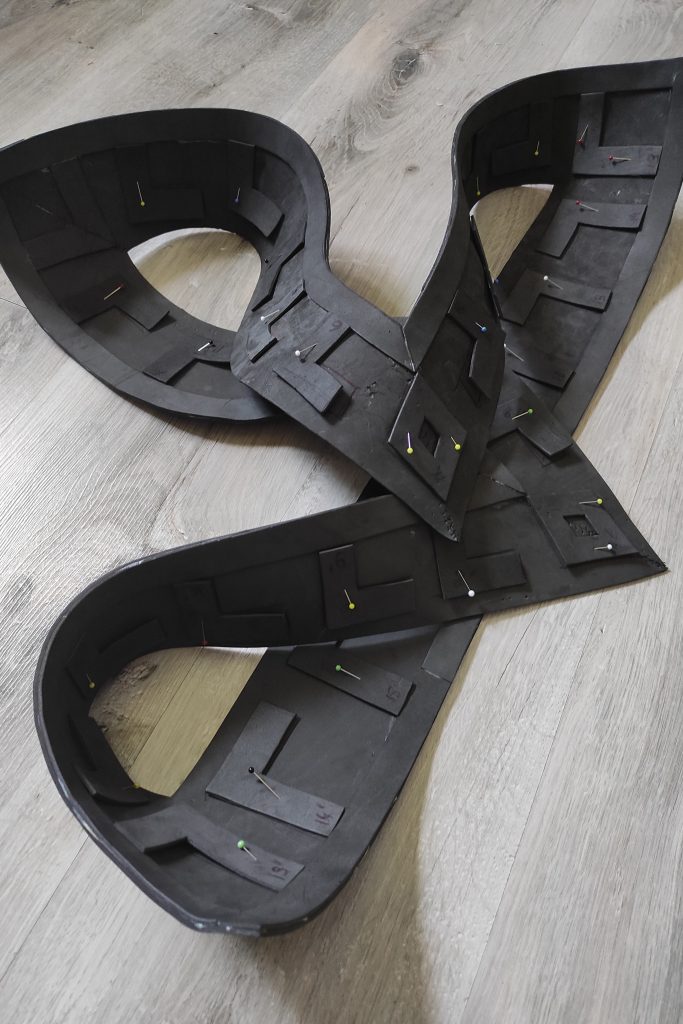
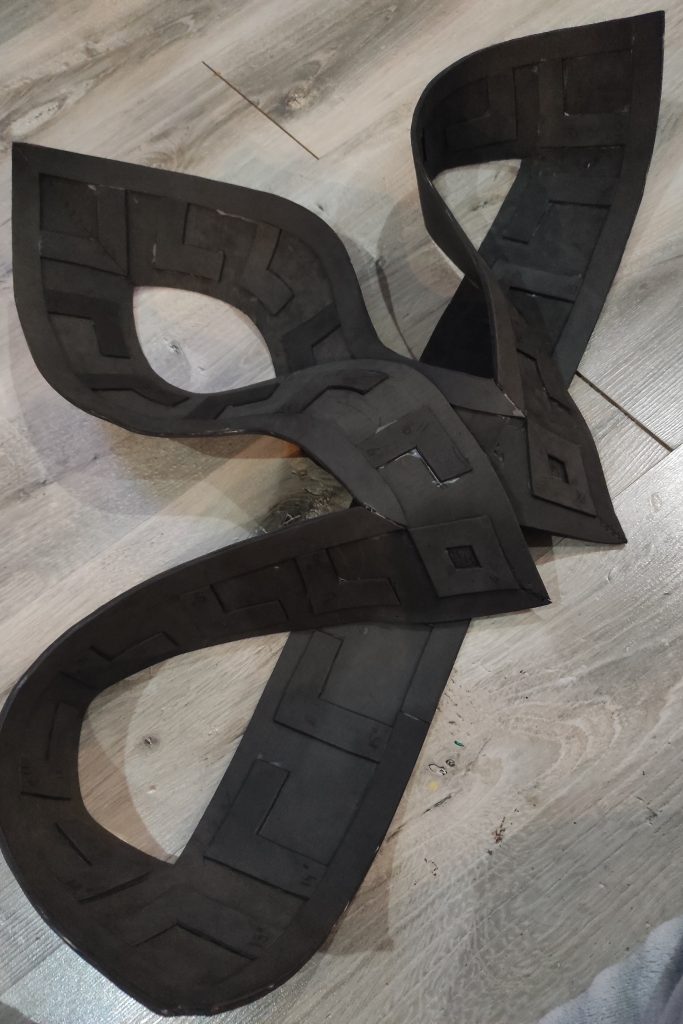
After a light coat of wood glue (which acts as a slightly flexible primer at a low price), I cover both sides of my foam with black paint using a conventional spray paint (I always take mine at Action, they are very affordable and do the job very well!).
I then add the silver paint on the previously glued details, two coats were enough. Finally, I put everything under a spray of acrylic varnish (still found at Action) and that’s it!
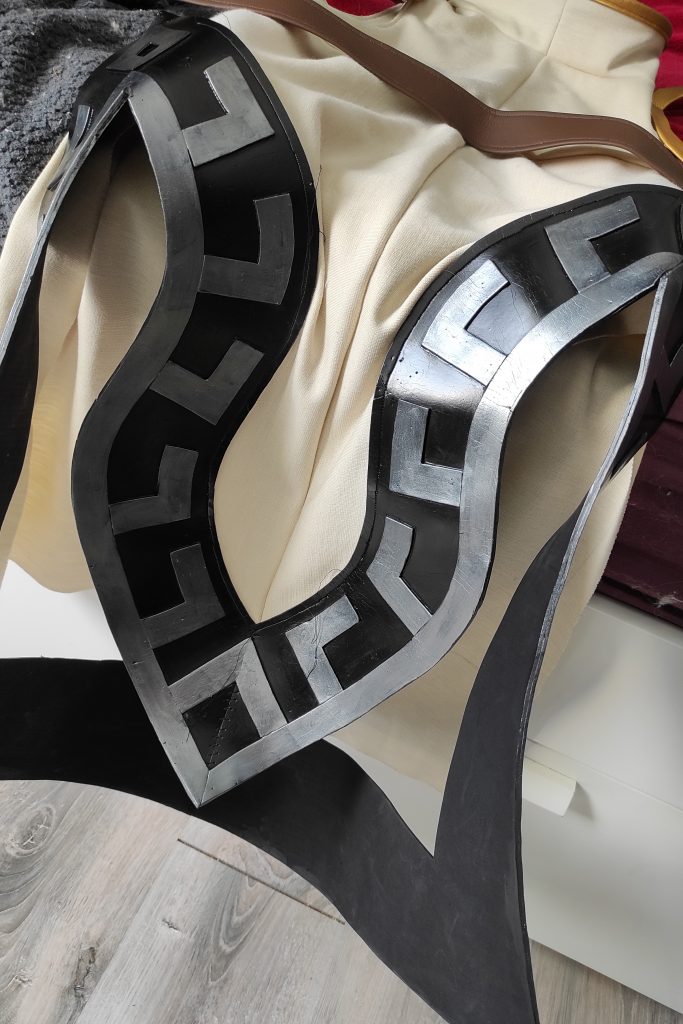
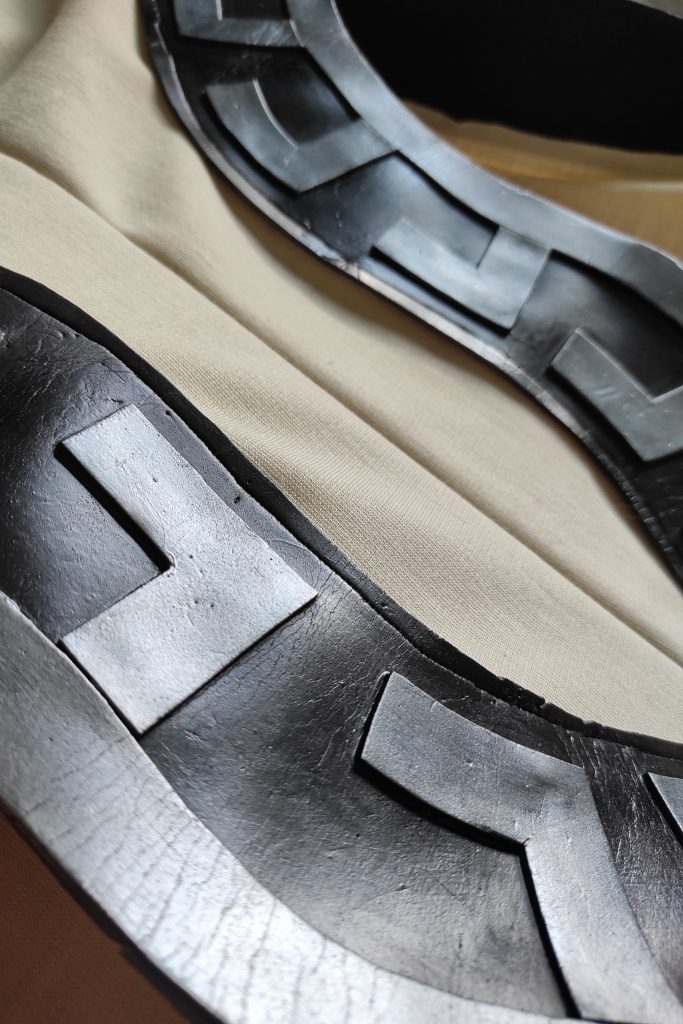
I then choose to sew everything on the dress. Neoprene glue would have done the job as well, but I preferred this option because it adds a bit of detail! (but I must admit that sewing foam properly was quite complicated, I had never done it before 😅)
To attach the tail (which we will see later), I have to make a hole in the back of the dress. This will allow it to be attached discreetly without the belt being visible from the outside! So I’m drawing a square that have the width of my belt, then sew the edges inward. This helps to make the opening clean and quite solid! ♥
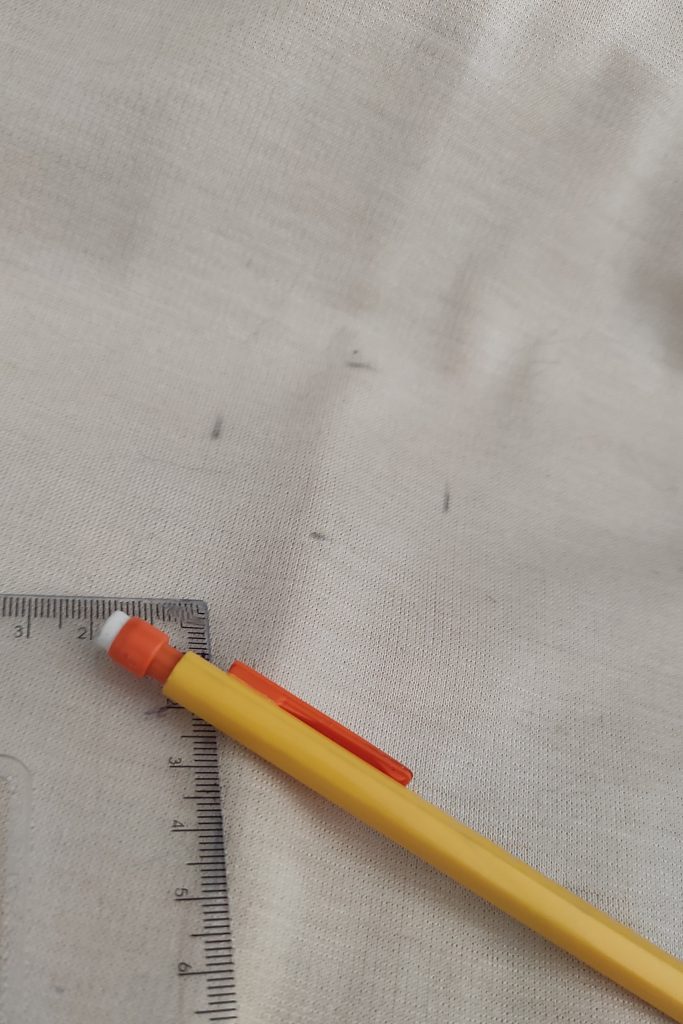
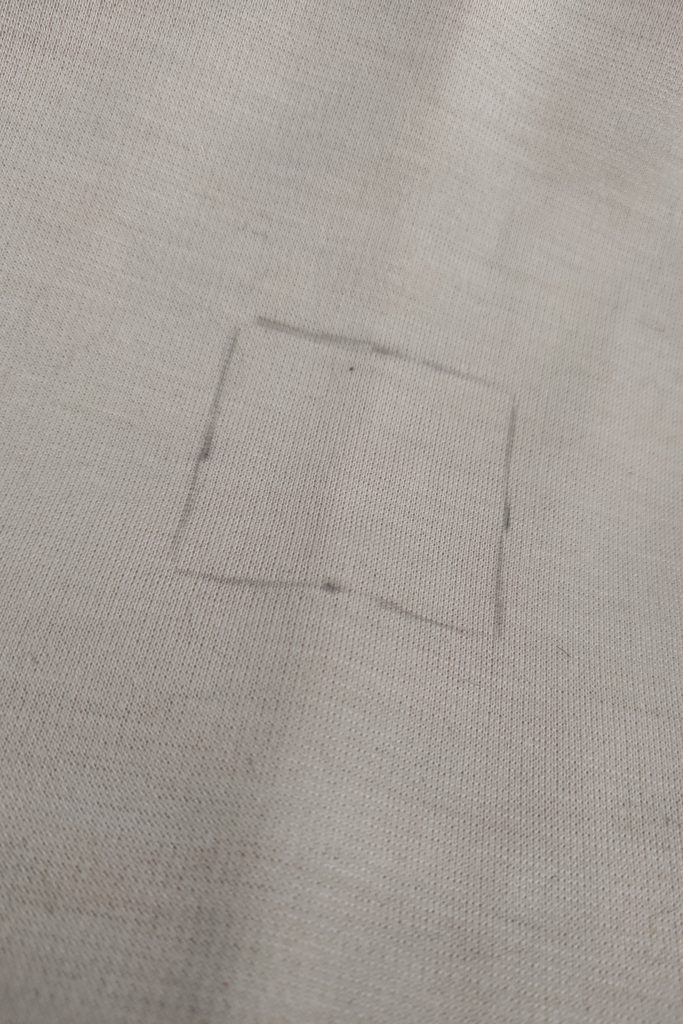
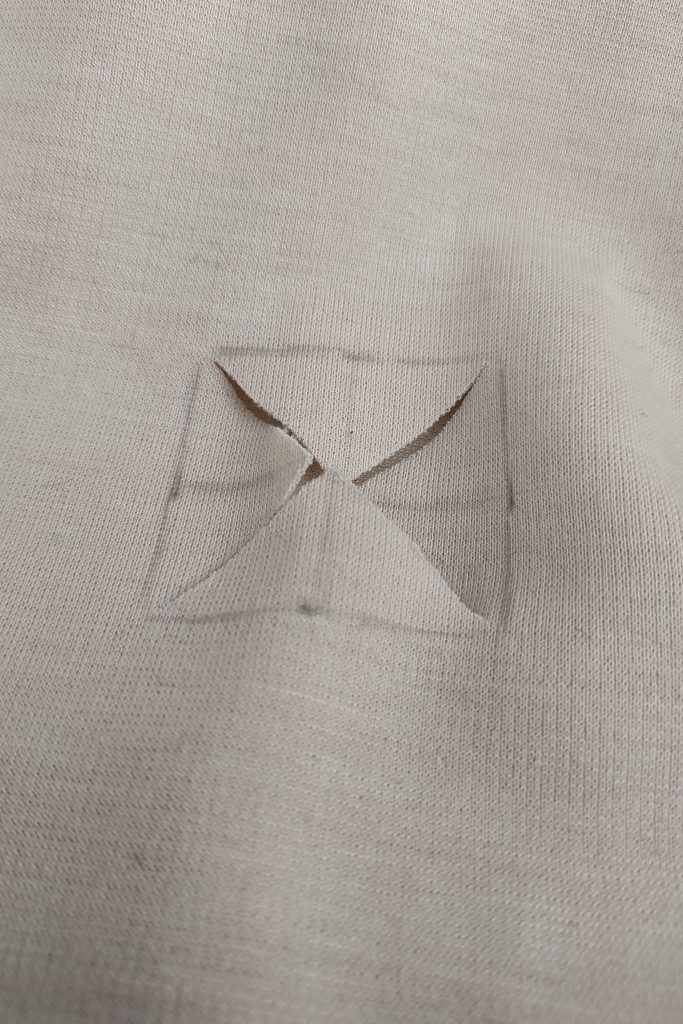
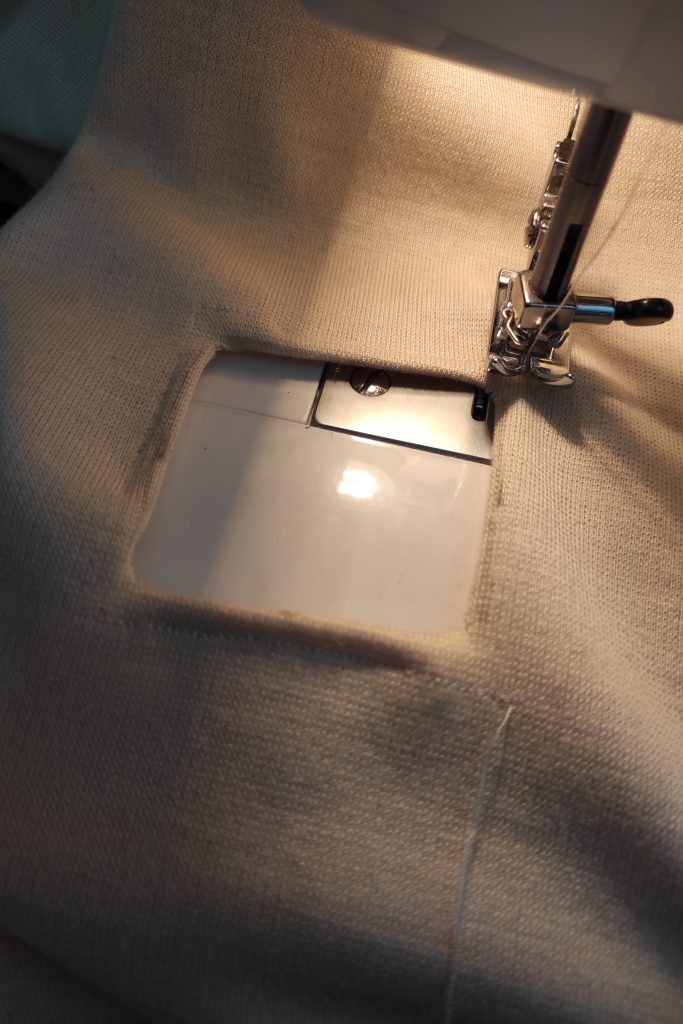
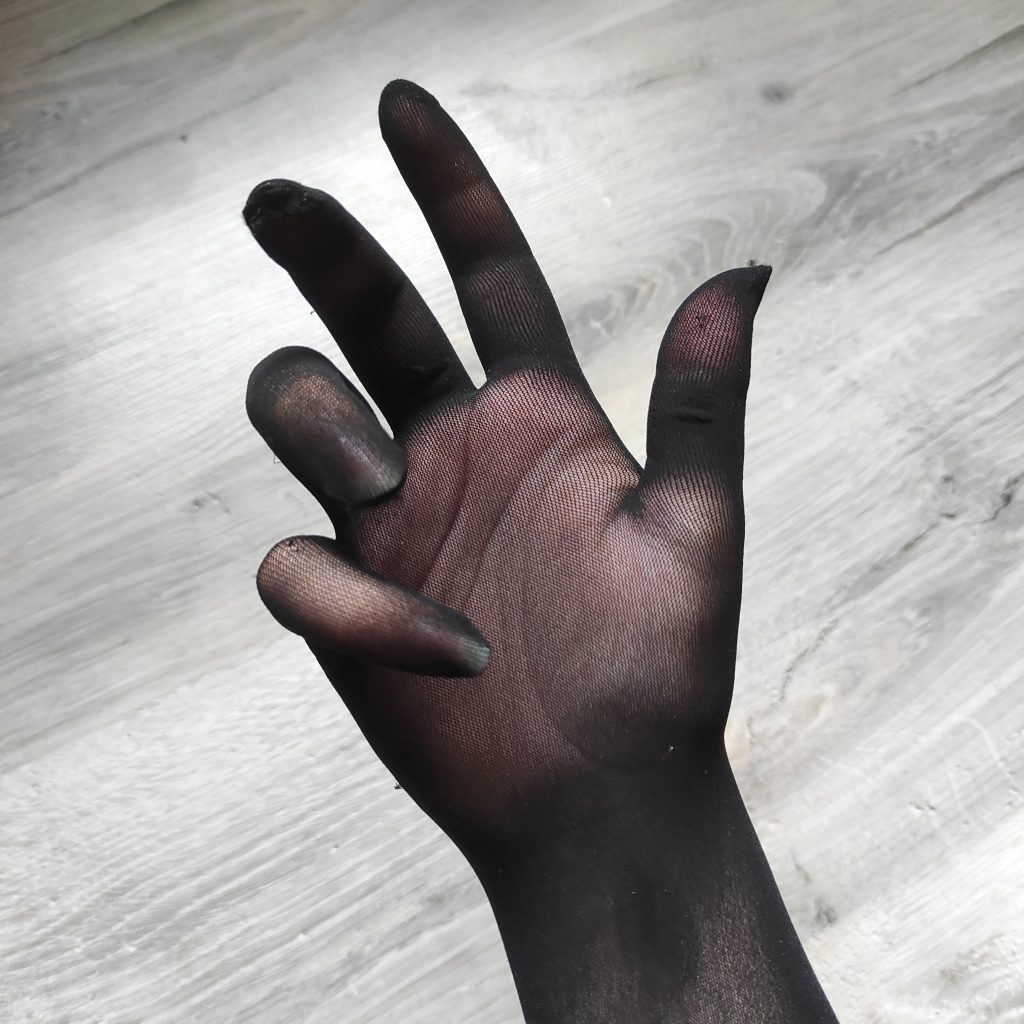
Finally, as the character in this design has black skin, I bought these gloves made from the same material as the classic tights! A super comfortable little find on Aliexpress. (You can find them right here if they still exist!) ♥
So I sew these two gloves to the sleeves of the dress. Not easy when the material must be stretched to the maximum but the expected result is there and lets stand out a superb gradient! 💪
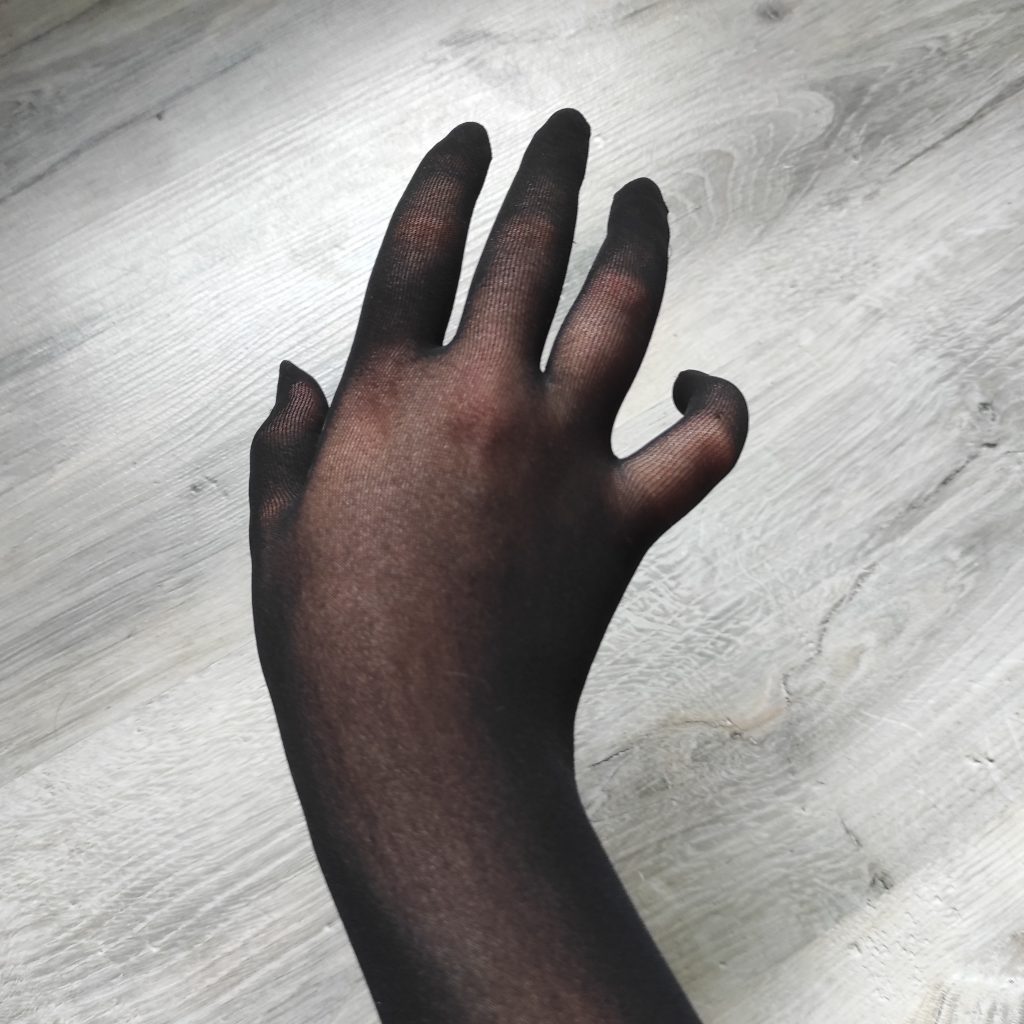
SEWING TIP: If you want to pin, sew, paint etc. a very elastic material that must be kept stretched, you can:
• Do most of the work directly on you if possible. (be careful though with products in paints which are not very good for the skin!)
• Use an object of the diameter / size you need. Example: a box of Prince cookies for an ankle / a wrist .. remember to measure to find out what will suit best! Then thread the fabric around this object while you work your fabric.
→ Don’t hesitate to combine several objects! For example, here I used a box of cookies combined with a napkin to get the diameter I needed. If you want to paint your fabric, be careful to protect your items with cellophane to not damage them!
And here is the final result of this dress !! ♥
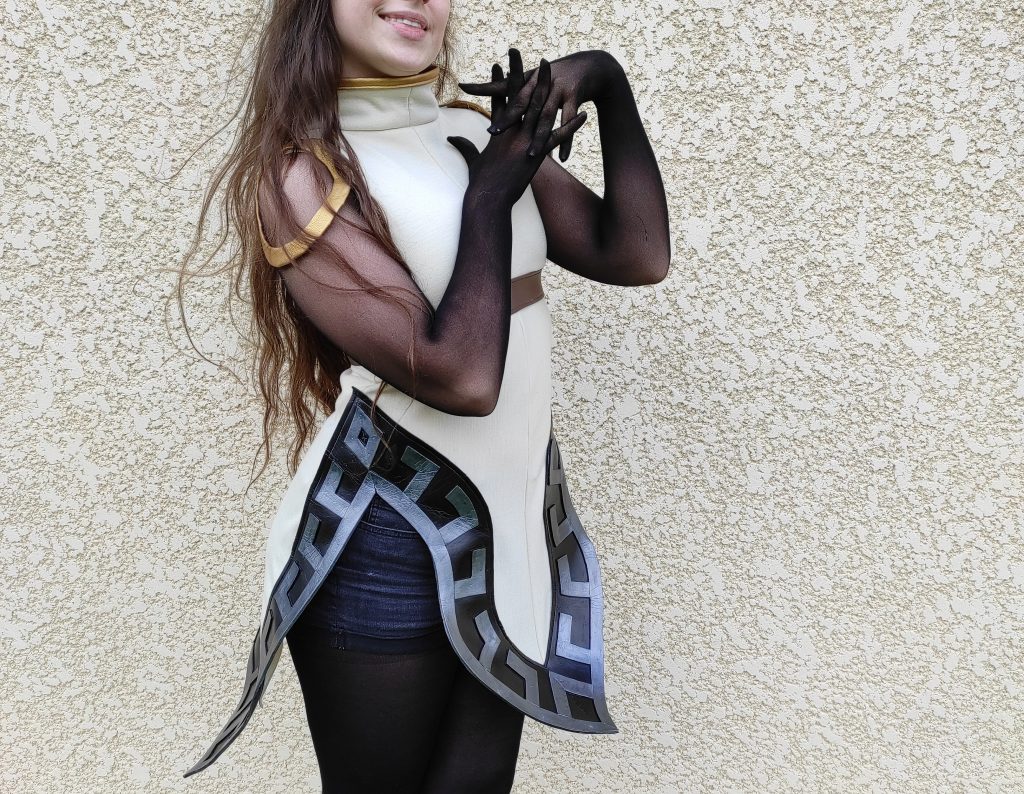
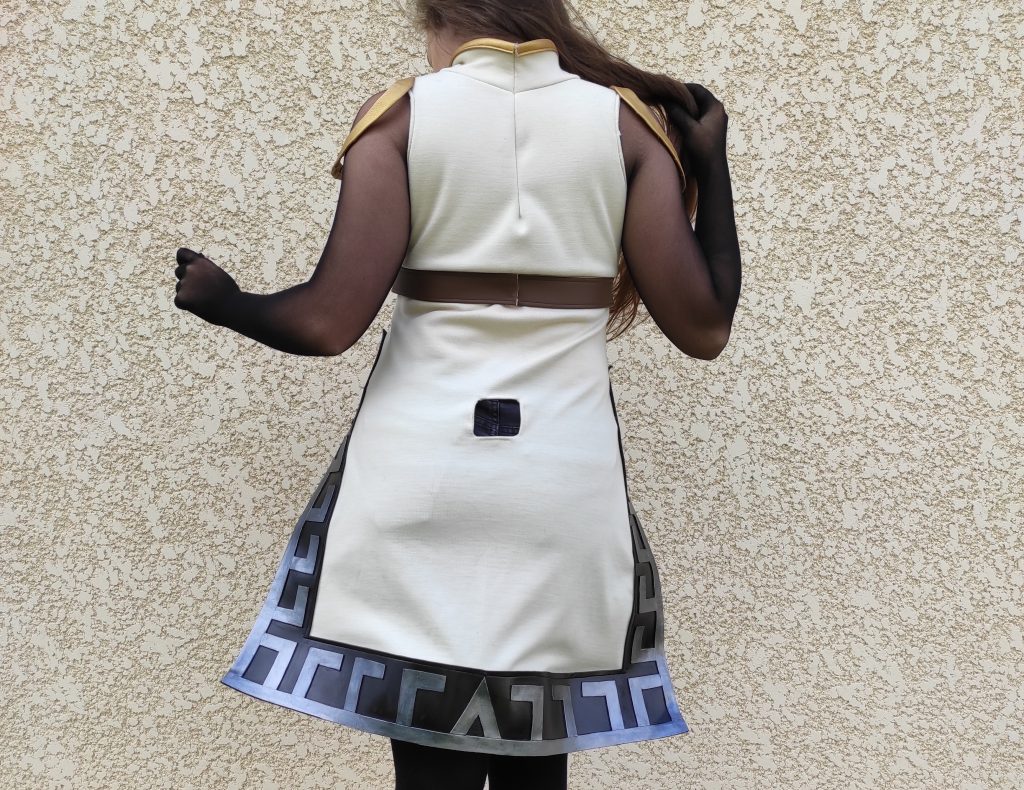
2 • The pants
The pants of this design also gave me a hard time, I had a lot of trouble finding a method that suited me to obtain a fairly puffy result like the one in the reference (especially since my fabric was very flexible and very elastic). After many hours of unsuccessful thinking, I asked my Instagram community for advice, and what a great idea it was! Many new ideas have emerged, and I kept four of them to develop them a little. (If you are one of those who helped me that day, thank you again! ♥)
After more and more thought (as well as a vote from the community to help me), I choose to use fusing fabric to stiffen my fabric (which, as a reminder, is very flexible – I could have used another tissue and think less, but I happen to be a bit stubborn, oops!). This method will also allow it to inflate as on my reference. So I choose a thick black fusing fabric on Amazon that you will find right here .
Regarding patterning, I wanted to mix harem pants and baggy pants. With the help of wide pants and a few measurements taken for the length, I trace the shape that I want to obtain in only two parts: a front face and a back face. I didn’t want to worry about these pants anymore so I opted for this simple and effective solution! 😋
Here is a small sketch of what I wanted to achieve! Long “sleeves” that tighten at the knee with an elastic band while keeping a seamless face (only on the sides!).
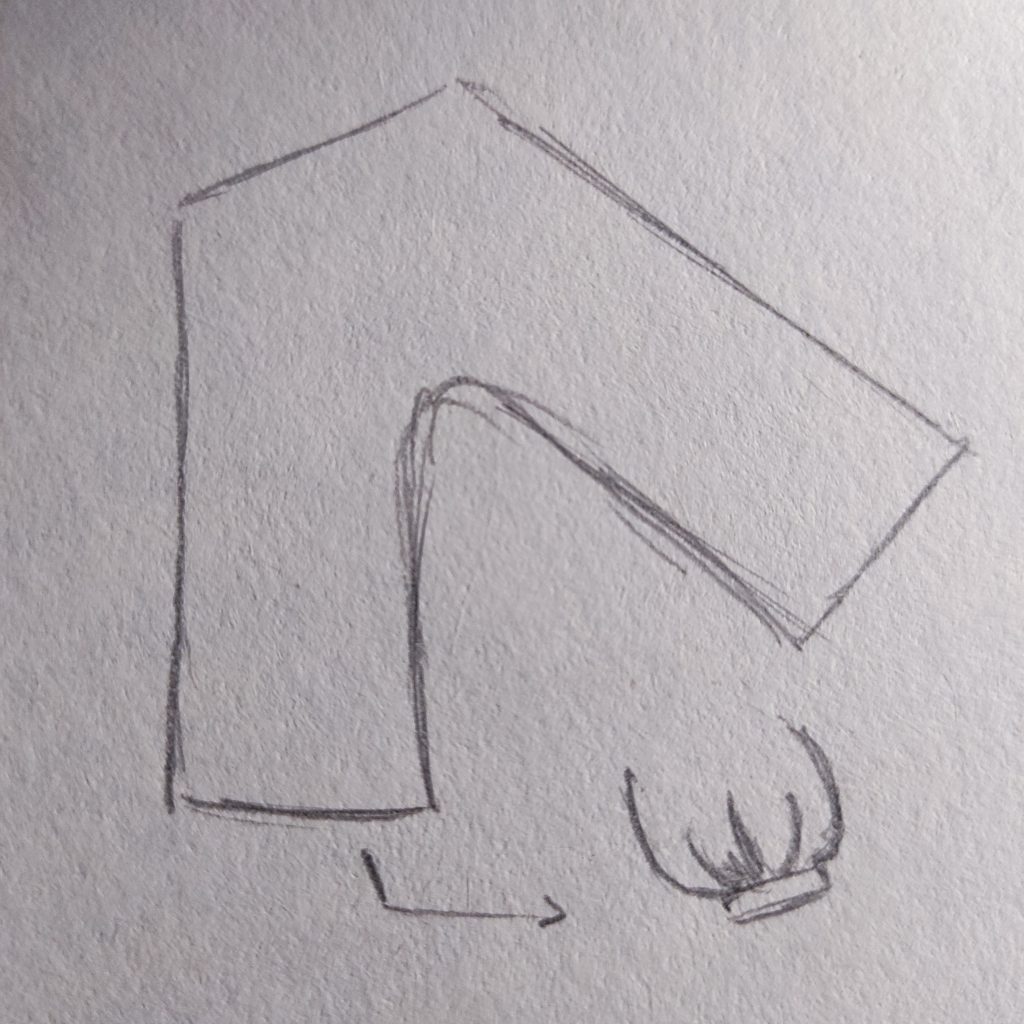
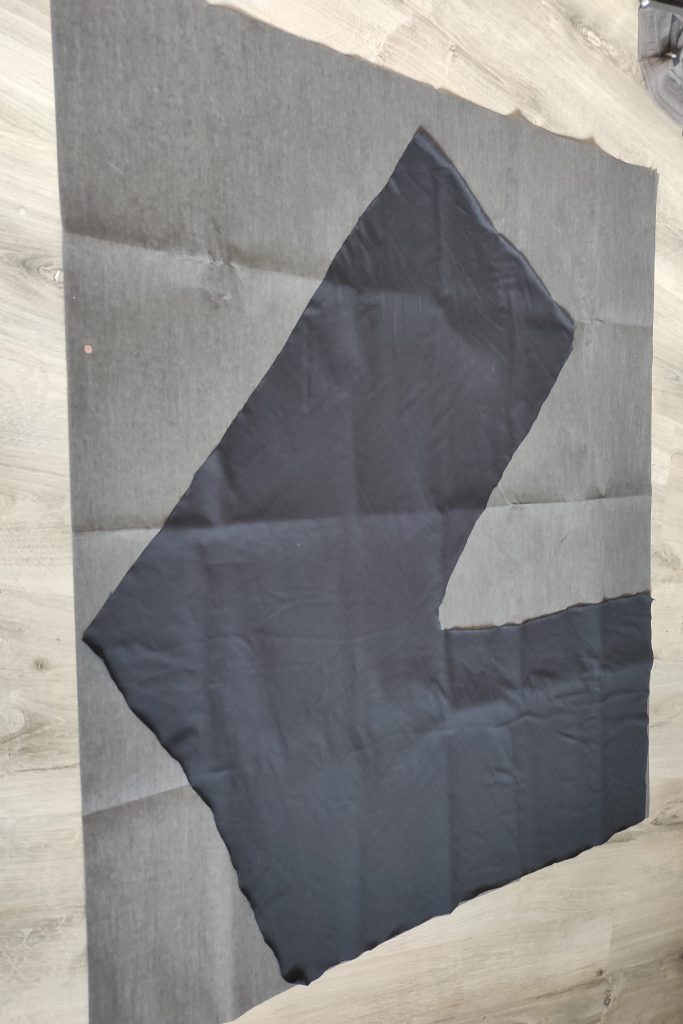
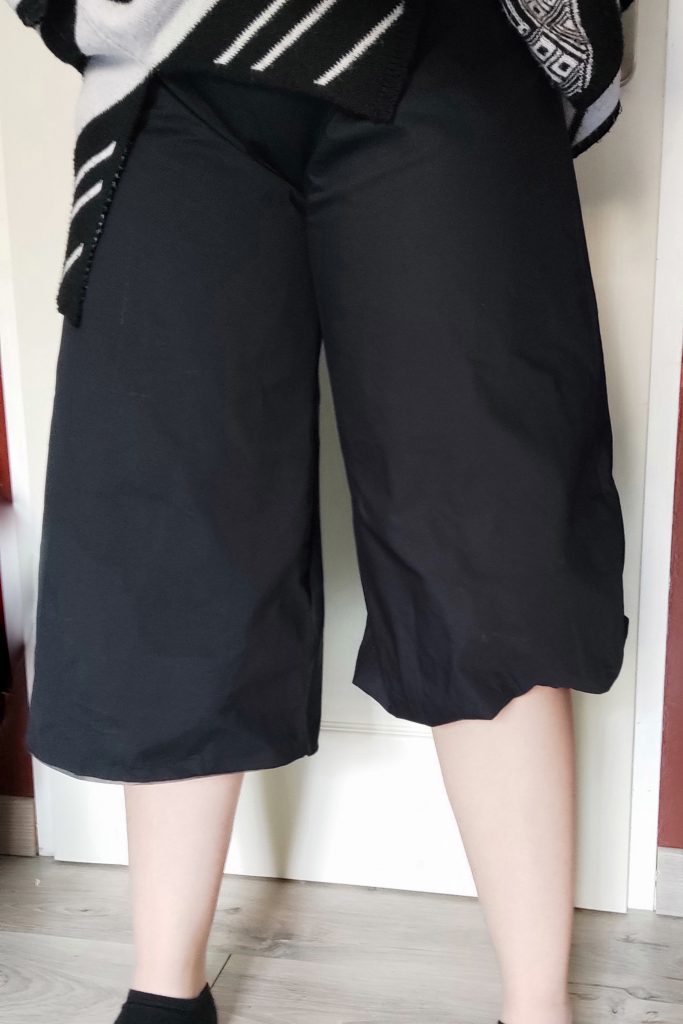
Once the pattern has been drawn and the fabric cut out, I start using my fusing fabric. Once it has been cut out, I slowly pass the whole thing with an iron to fix it to the fabric. I then sew my two pieces of pants together. Small test of the puffing effect.. Perfect!
So I add my elastic bands to close the pants, as well as a very simple belt with an elastic (I wanted so much to finish sewing these pants that I forgot to take pictures that day, oops!)
For the golden circles on the character’s thighs, I use the same method as for the shoulder pads! For this project, I used neoprene glue from Pattex: the Contact Tix-Gel. The tube version is very good for small projects because it is very handy and is easy to store! For large projects, I recommend the big pot version instead, which is less expensive in terms of quantity. PLEASE remember protect yourself and your pets by wearing a respirator and putting your pets in another room!! Contact glue vapors are really bad for our lungs.
CRAFT TIP: If you want to keep the glue in a pot longer, you can put some of it into a plastic tube (like this one!) for the duration of your project. This will avoid opening/closing your pot too often and will therefore prevent your glue from drying too quickly! Be careful not to put too much glue in this tube because it will dry much faster than in a conventional container.
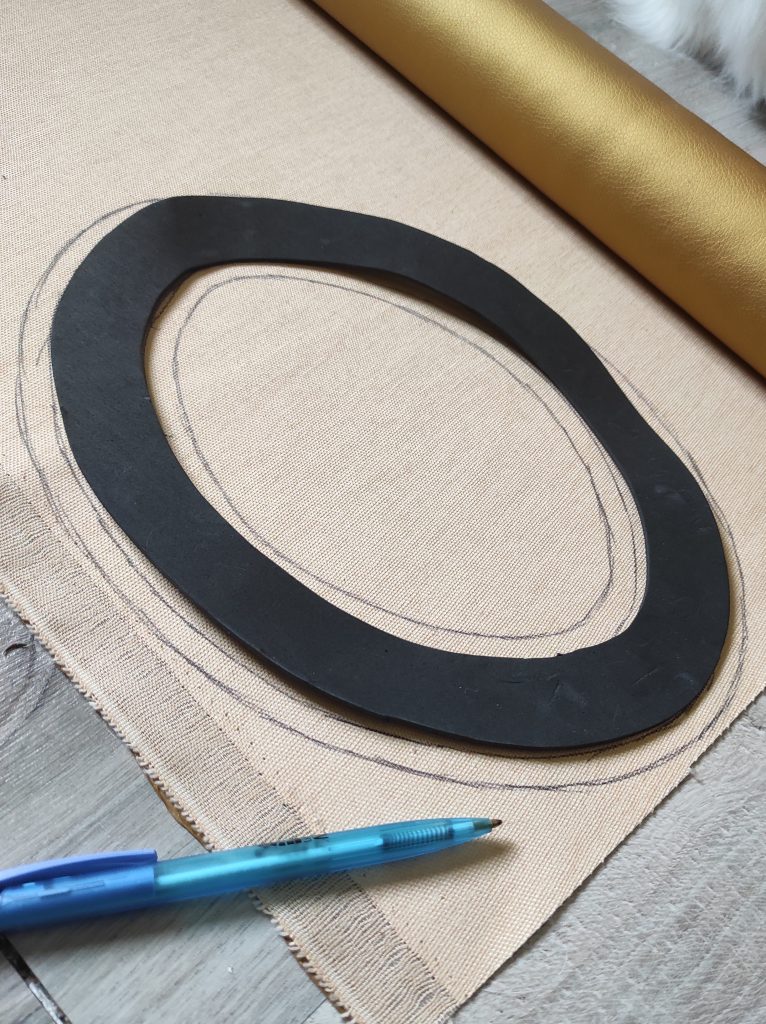
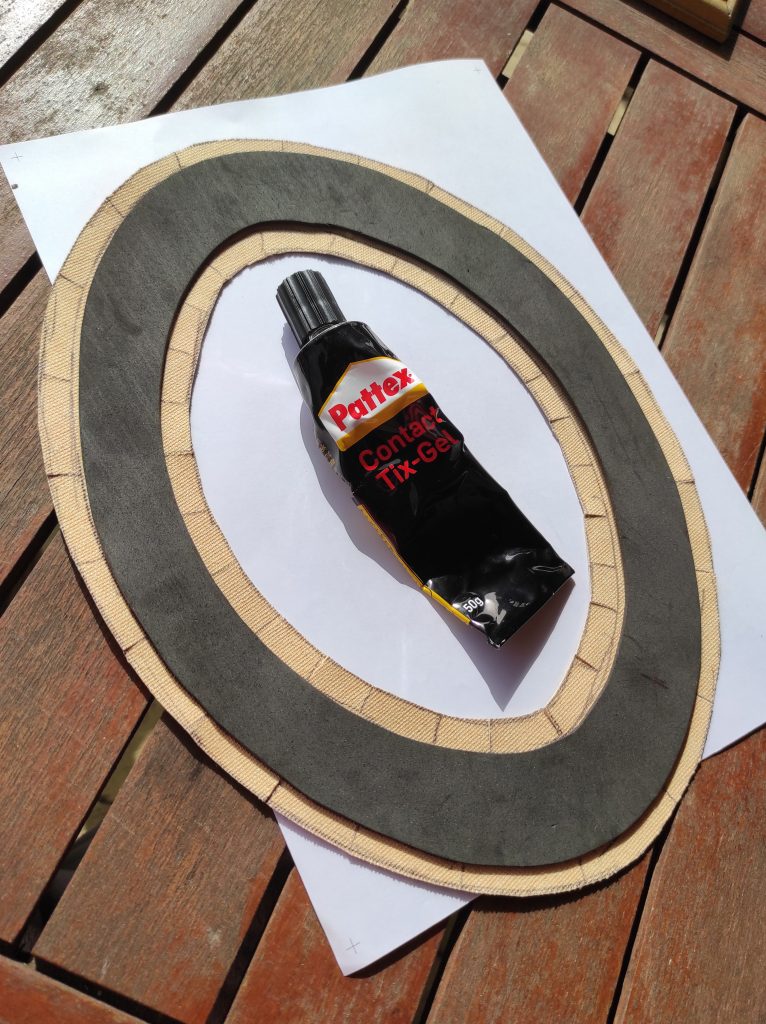
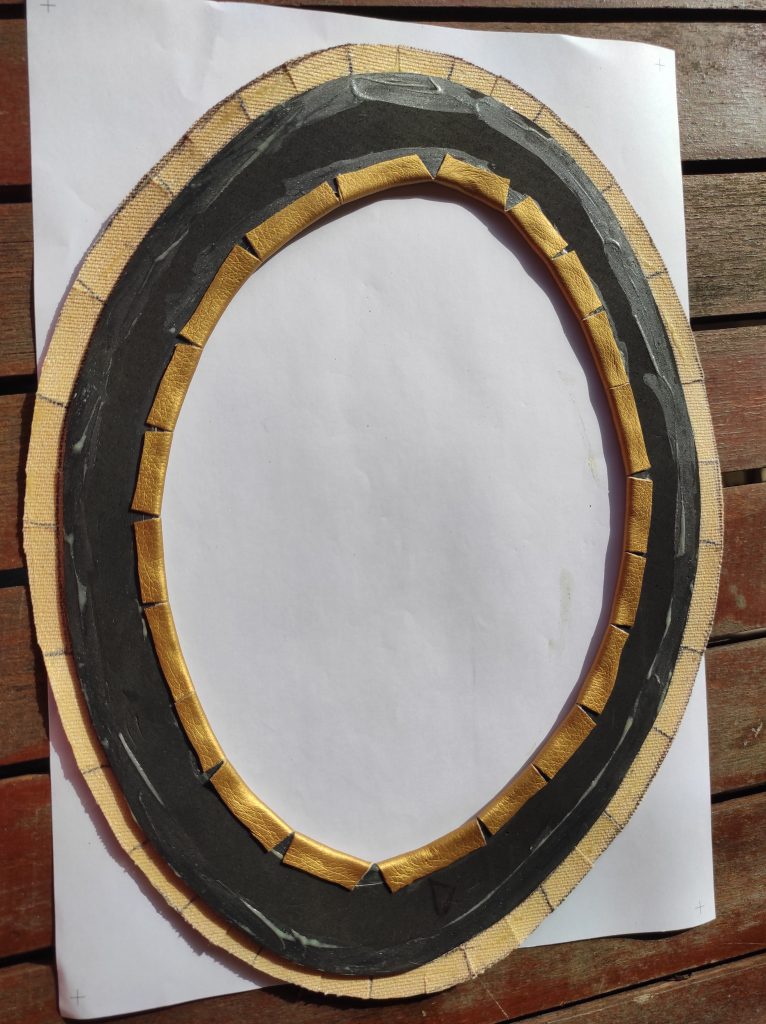
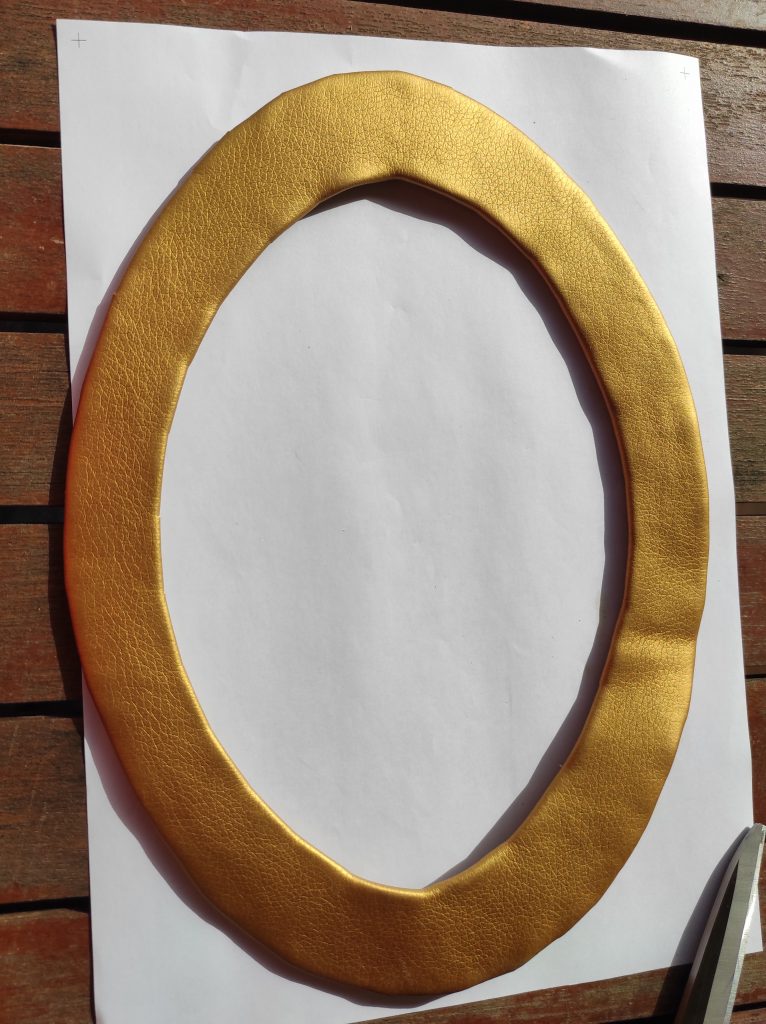
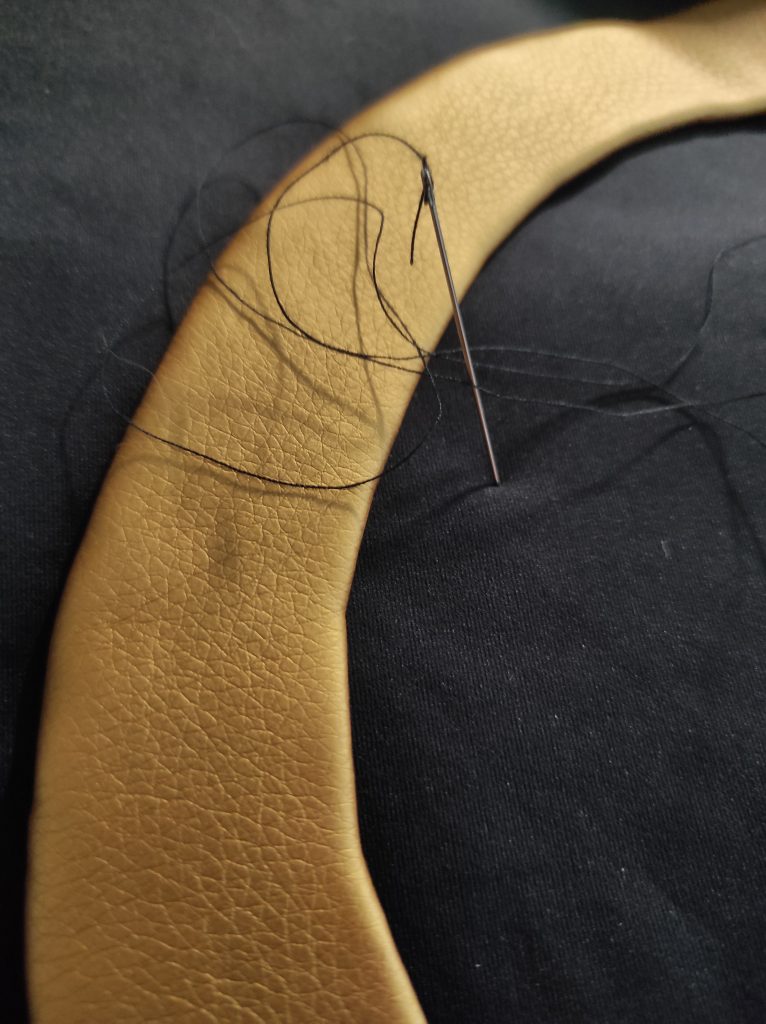
Once the two circles are ready, only a few hand stitches are enough to secure them to the pants.
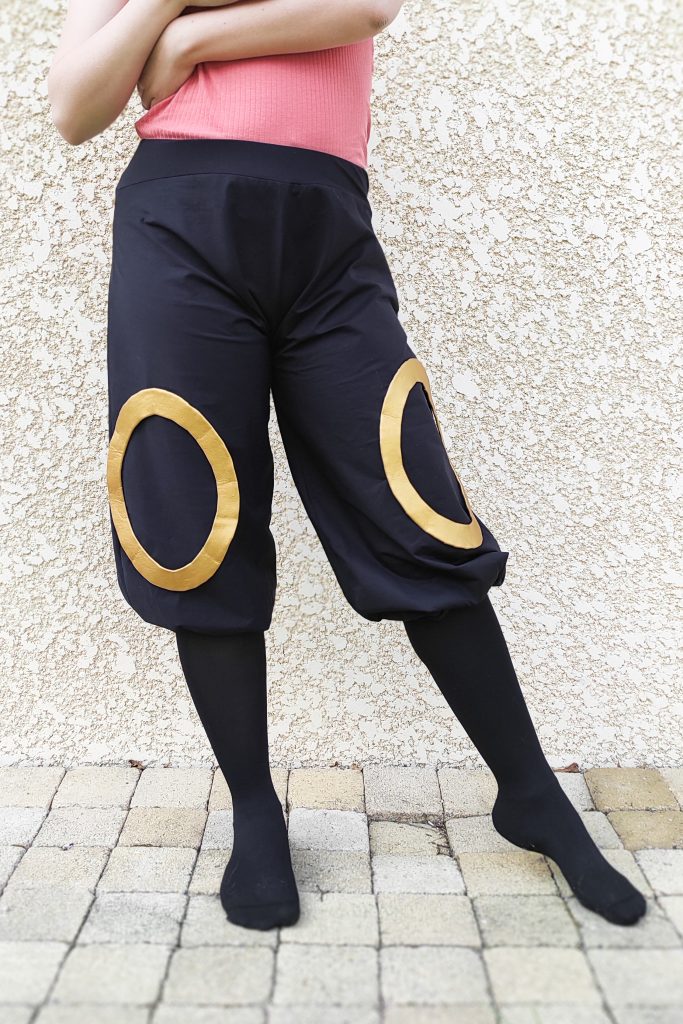
Final result of the pants worn with opaque tights! ♥
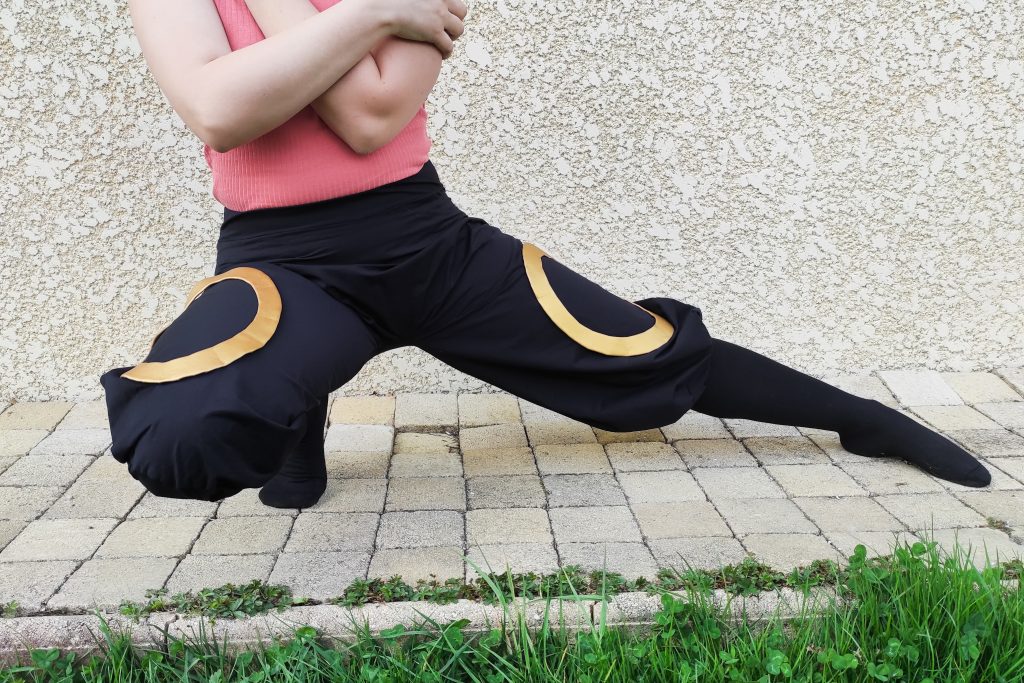
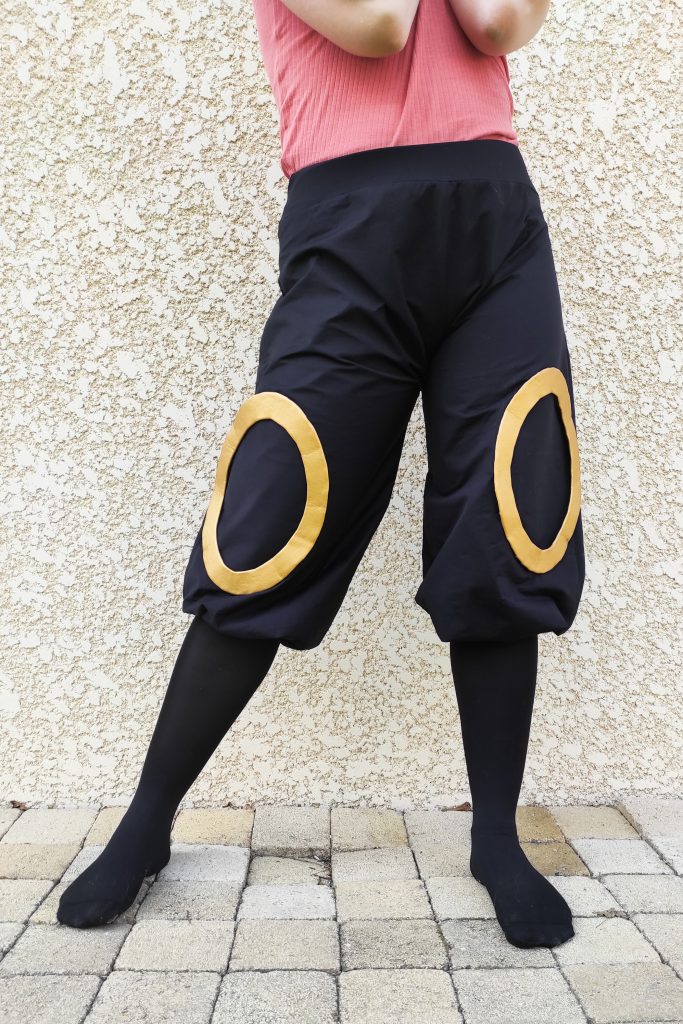
3 • The tail and ears
This part was certainly the most satisfying, even if the dyeing of the fur was a real hell to achieve! 😆
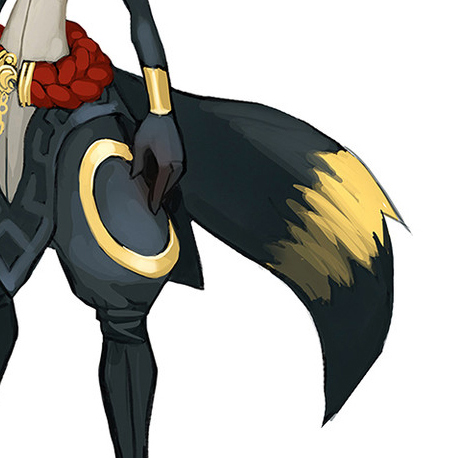
I first draw my patterns on a paper and then modify them until I get the size I need.
I draw and then cut the patterns into three parts to use two furs: one black and one gold. ♥
For this project, I used the long-haired fur from I Love Tissus that I loved working with!
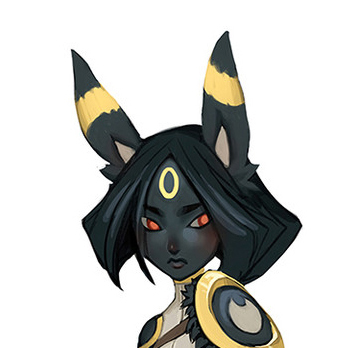
Once the patterns have been drawn and cut, I draw my cutting lines on the back of the fur using a chalk (for the black) or a felt pen (for the white) without forgetting to make the mirror of every part! I take this opportunity to make the parts for the male version (second costume which will be finished later! ♥) in order to optimize the cut.
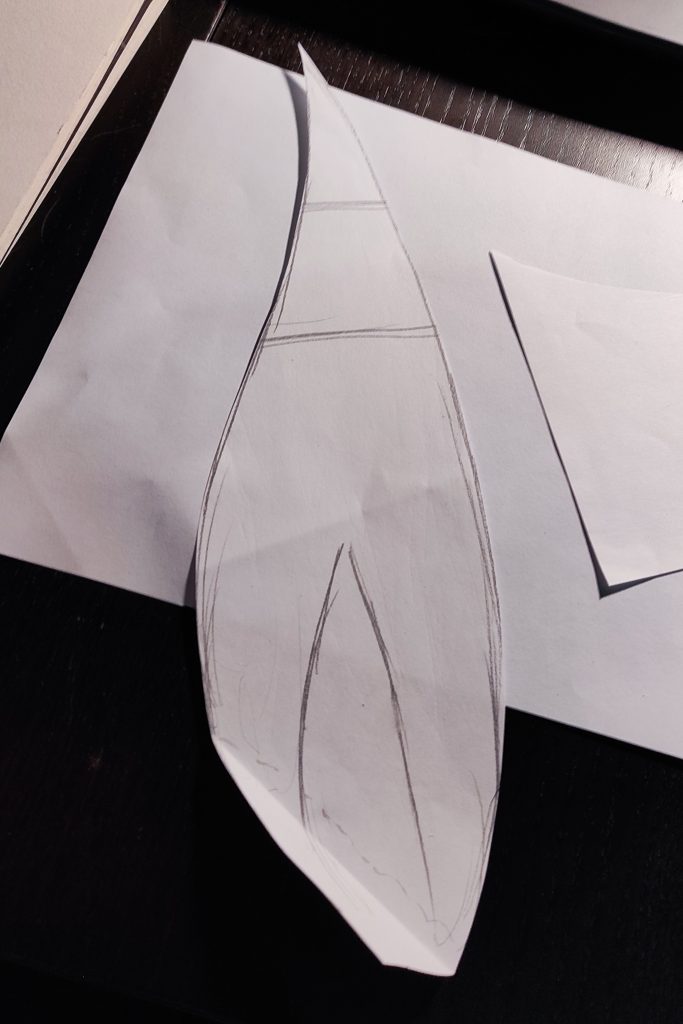
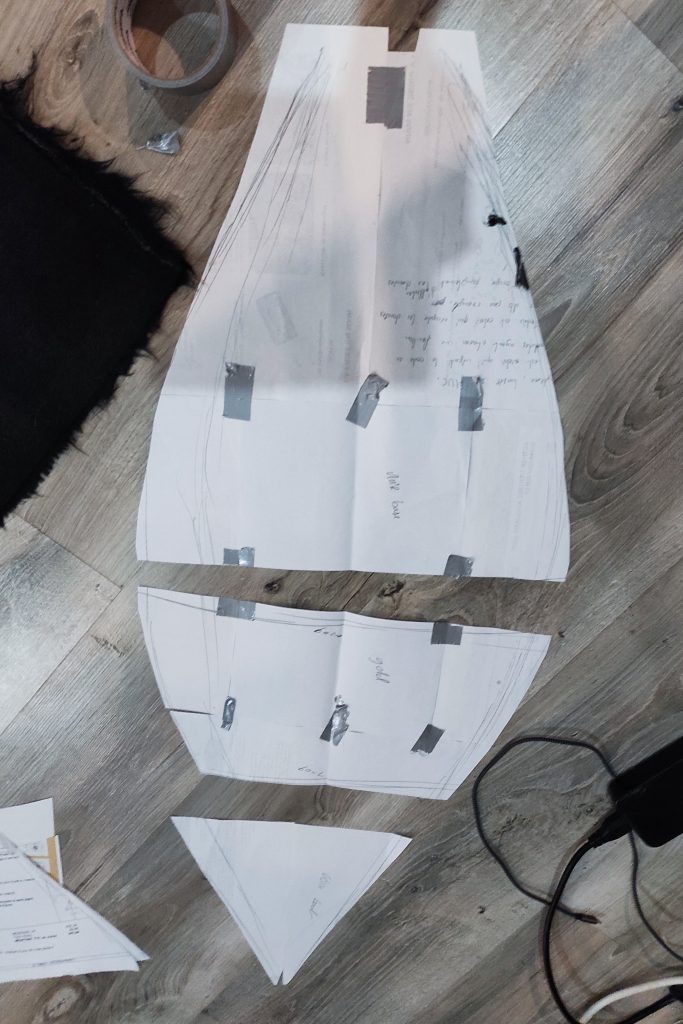
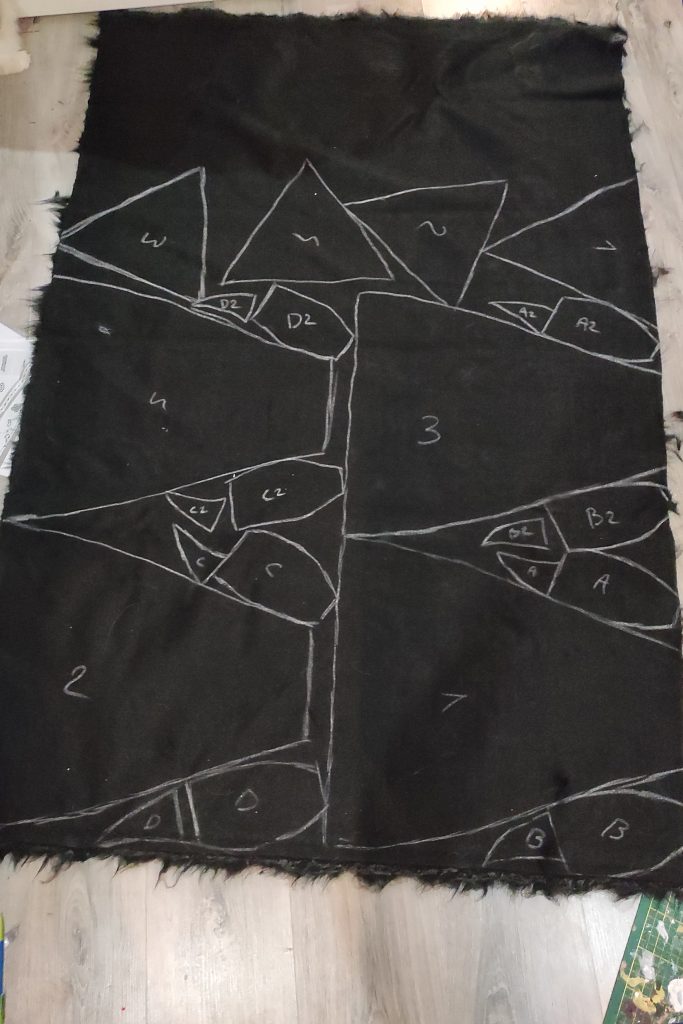
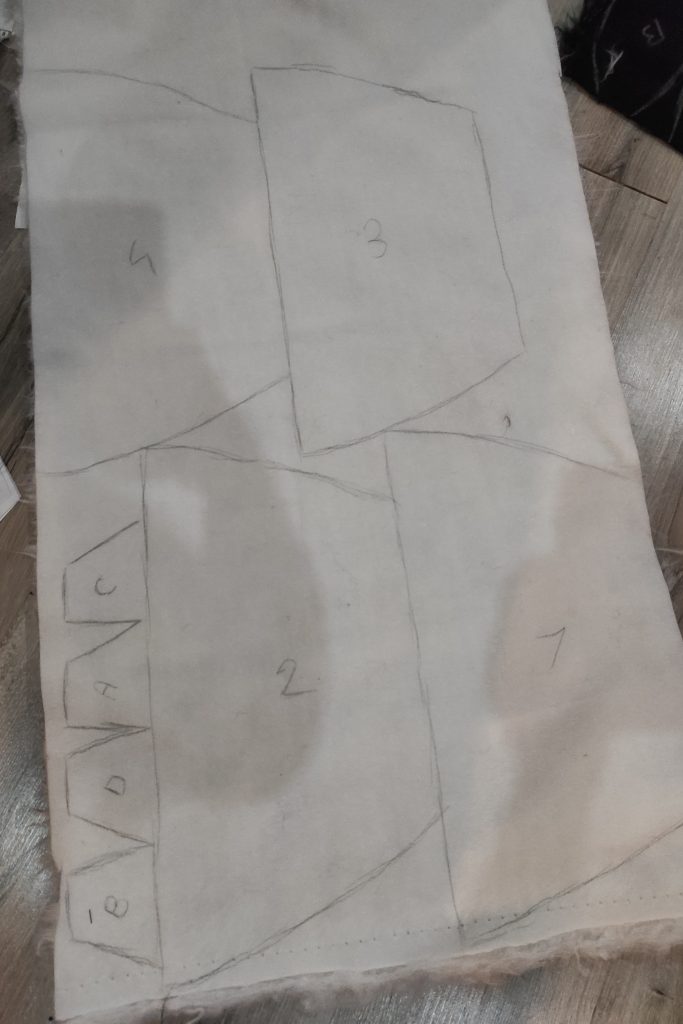
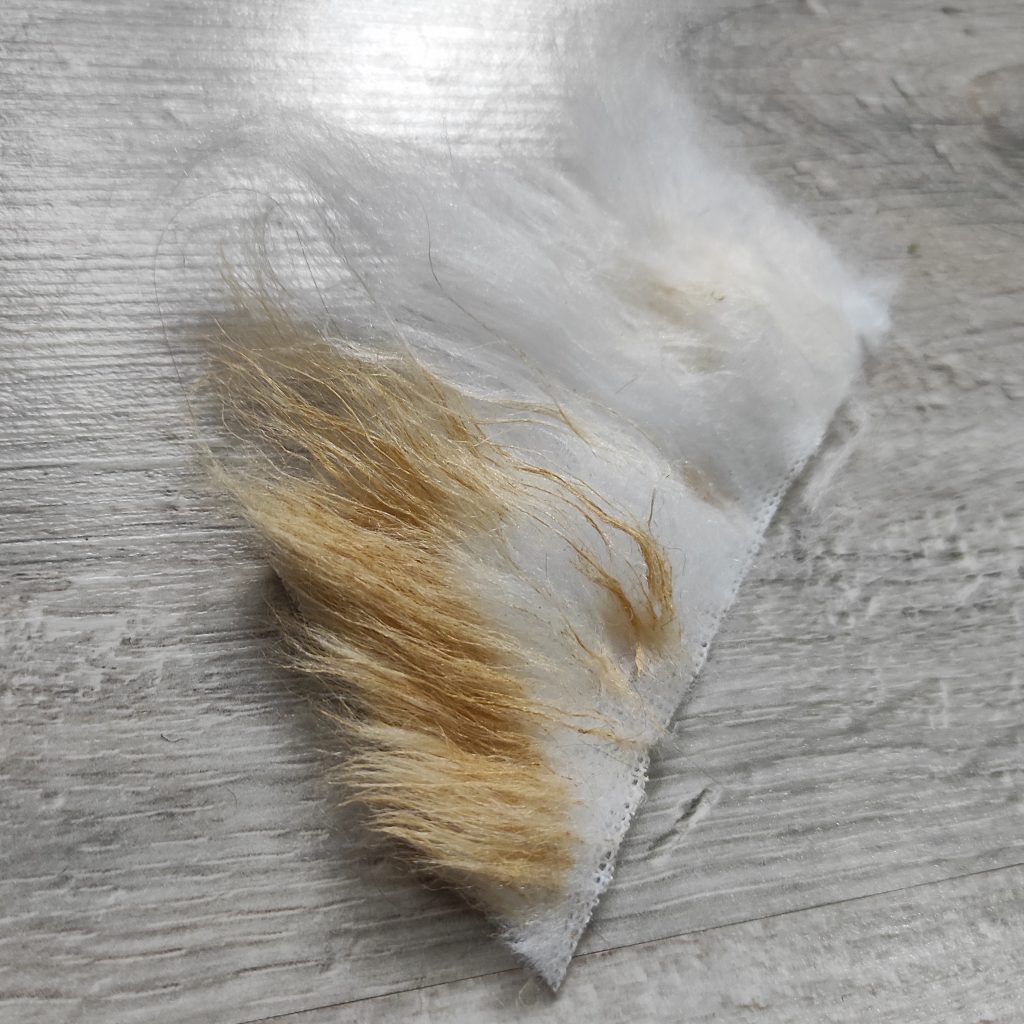
For the golden fur, I looked for a long time to buy one that was already colored but the ones I found online did not suit me. So I thought about dyeing a white fur with dyes for synthetic fabrics but once again, I was not convinced to get THE color I wanted, the one that would perfectly match the shade of my faux leather and my armor.
The only solution was therefore to dye my fur with the same acrylic as the one used on my armor (which we will see later ♥)!
After a few airbrush tests, it turns out that the paint I am using is not suitable for my airbrush. So I chose to test the dye with a brush and with a bit of determination, the result finally suits me!
So here’s to the most endless part of this costume: hours and hours of brush dyeing! Fortunately all this suffering was well worth it, the final color is absolutely splendid! ♥
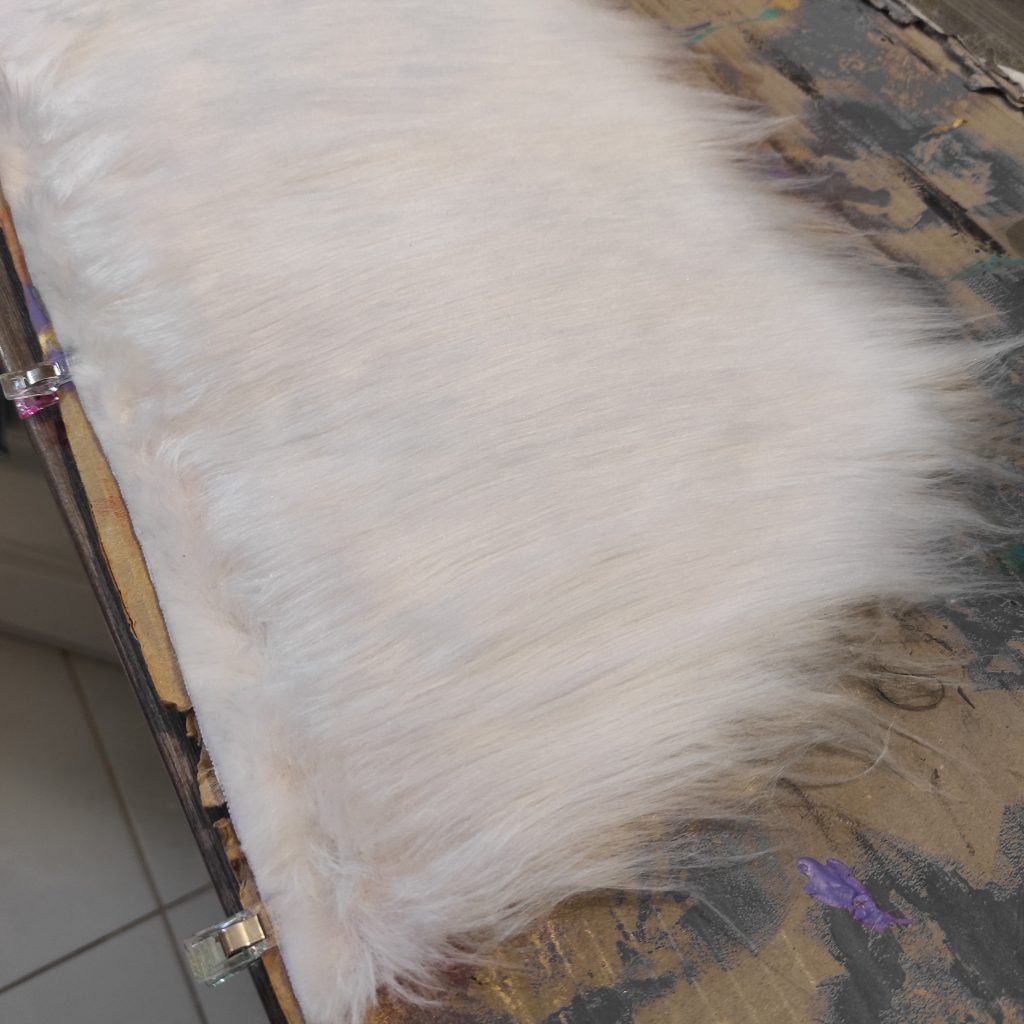
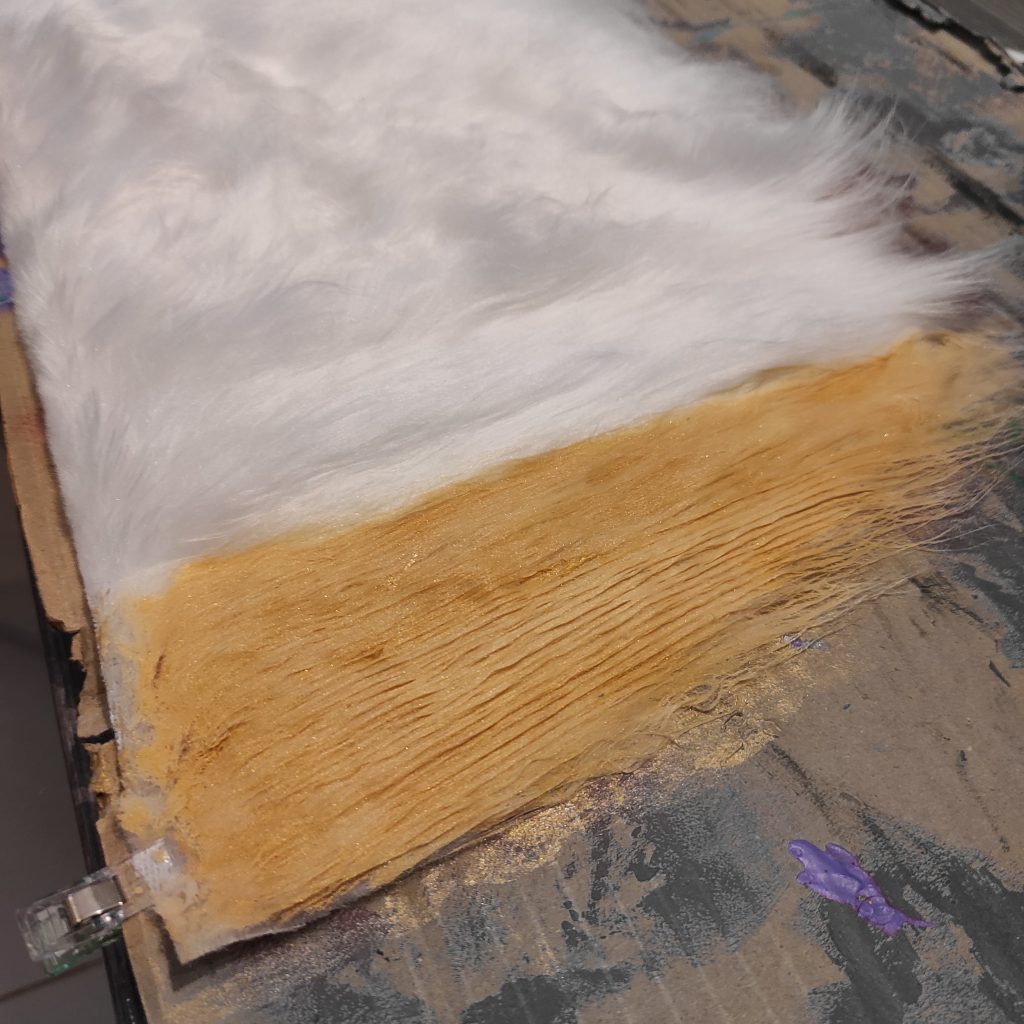
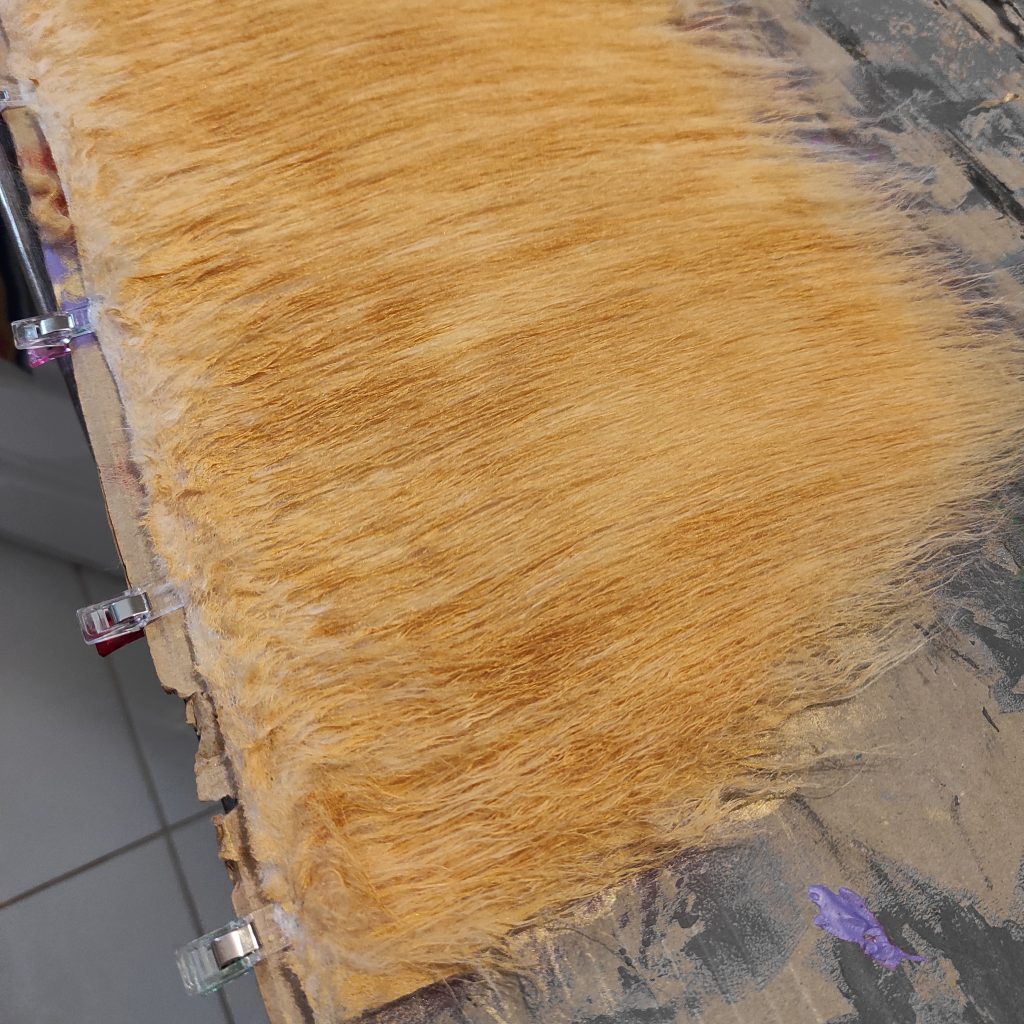
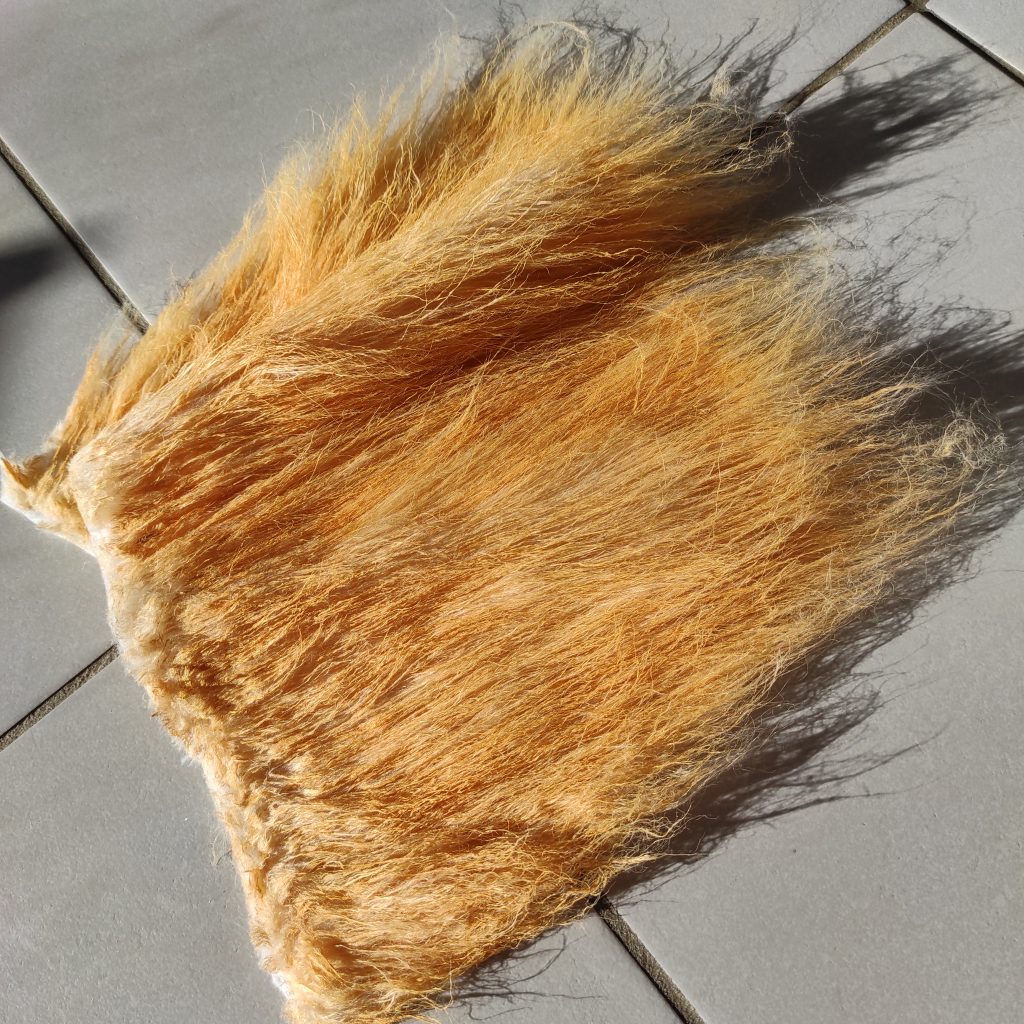
FUR TIP: If you want to dye fur with acrylic but you don’t have an airbrush or your paint is not suitable, you can do it by hand using a brush, comb and a hair dryer. Start by combing your fur and then mix your paint with water in a cup to make it more liquid. Then apply paint to a small area of your fur with your brush, comb through and repeat until all the fur in that area is dyed. You can comb your fur upside down too to make it easier to apply your paint! Once your little part is dyed, dry it with the hair dryer, combing it until your fur is dry. Combing while drying will help prevent hair from clumping when dry! This method is very long so I do not recommend it if you have large pieces of fur to dye. Be careful, your fur will unfortunately be much rougher than before dyeing!
Ears assembly
For these ears, I wanted to use a simple and seamless method. If you want to know more about this method, Kinpatsu Cosplay recently released a video about it! You can find it right here! ♥
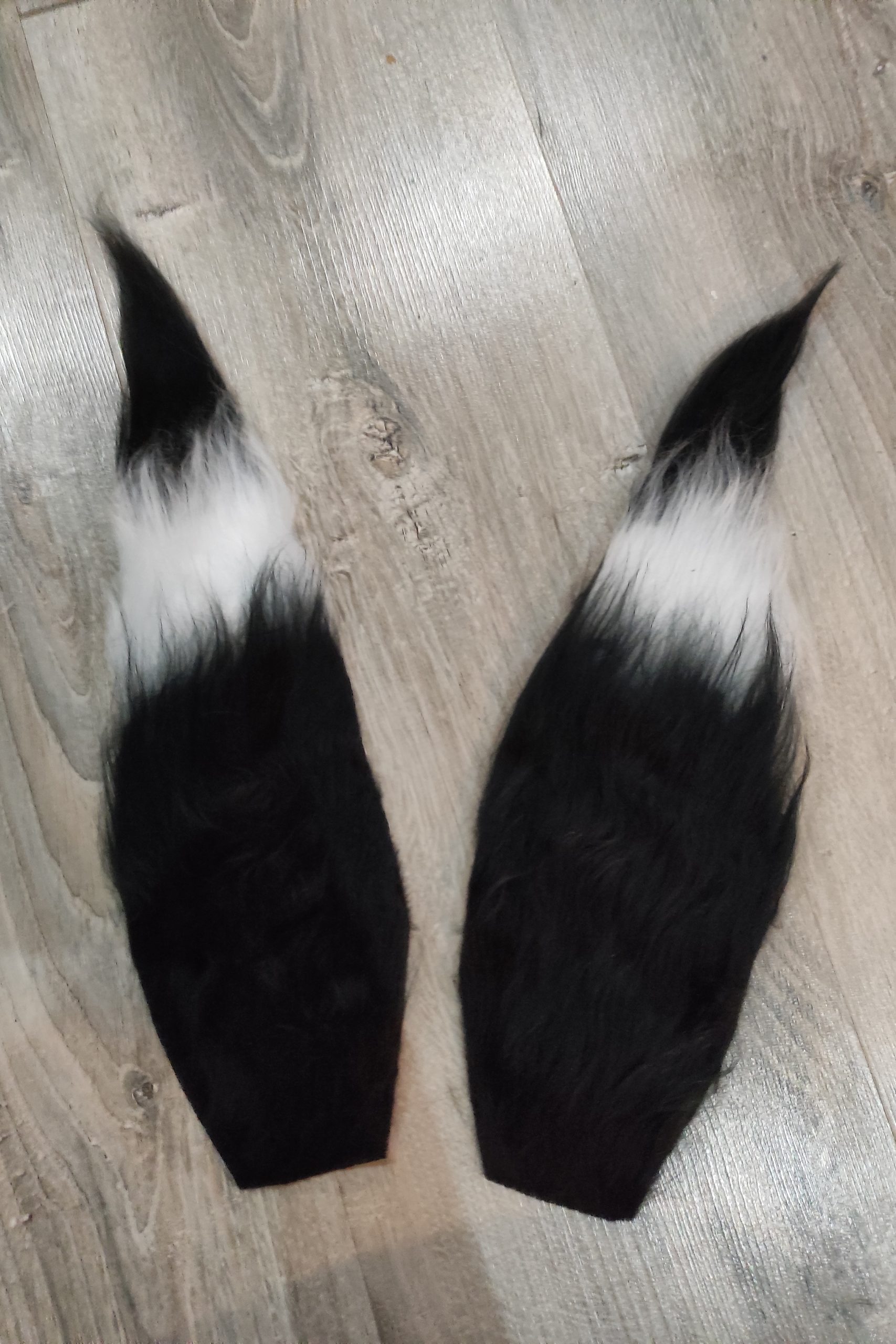
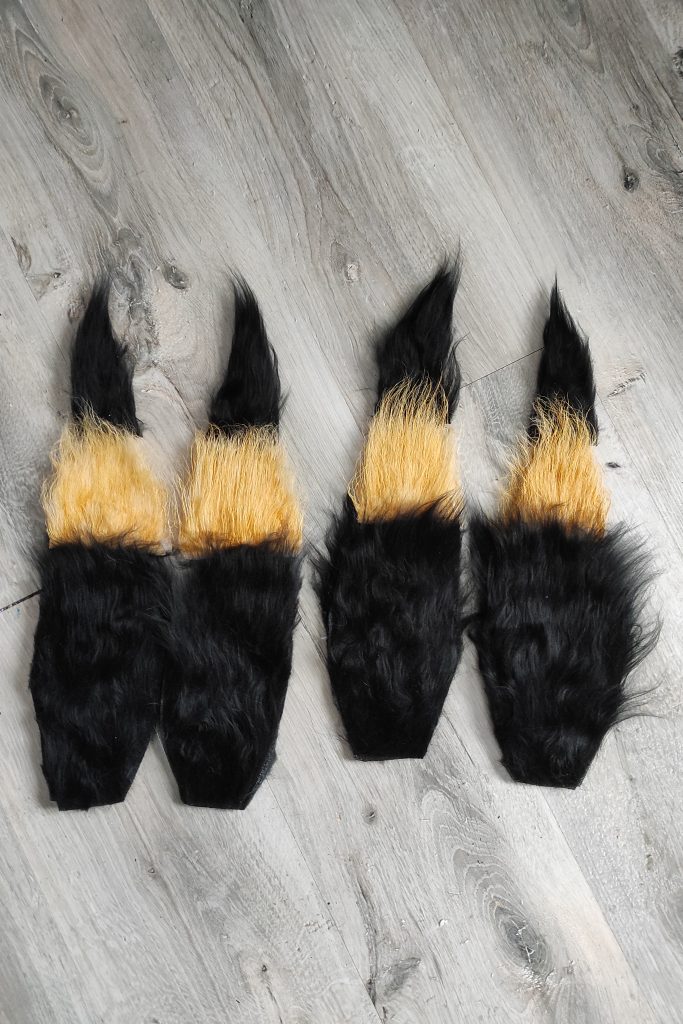
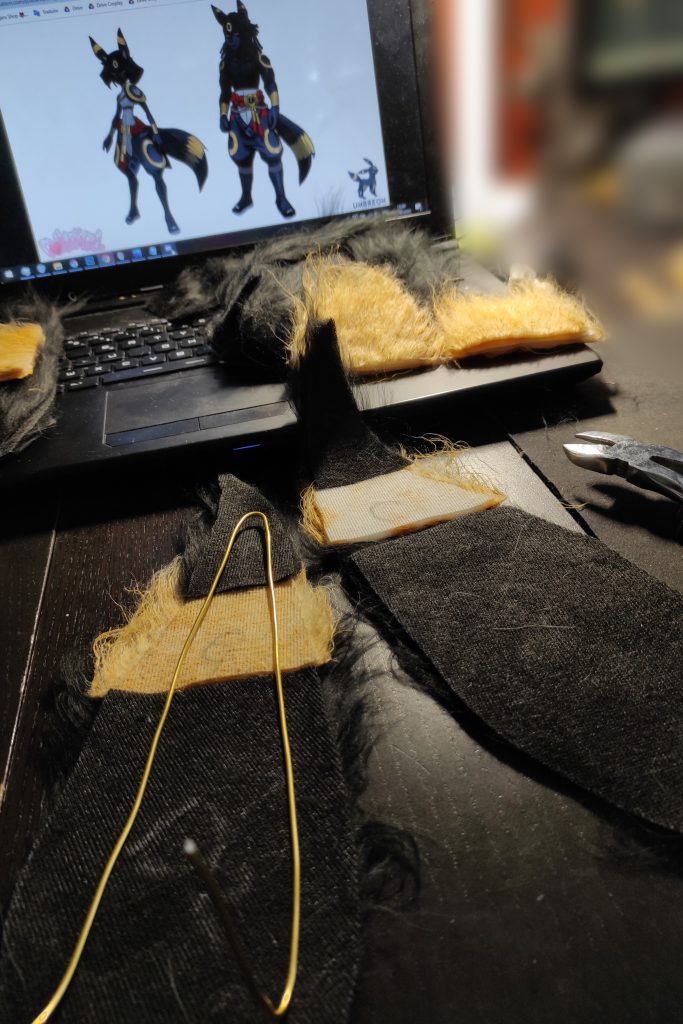
Let’s talk about the assembly: to allow my ears to bend as I want, I use aluminum wire (usually used for decorations or jewelry) to create a frame that will be locked inside (I also let protrude several centimeters at the base of the ear to be able to wrap it in a headband when finished! ♥).
Once the general shape has been created, I place it in a sandwich between my pieces of fur and glue it all together using a good big dose of hot glue! (the glue gun: best friend of the cosplayers 😉)
For the skin part in the center of the ears, I use an old suede type fabric that I paint in acrylic to give it the color I need.
To get this shade, I simply do different paint mixes that I test little by little on a scrap of the fabric of the dress! ♥
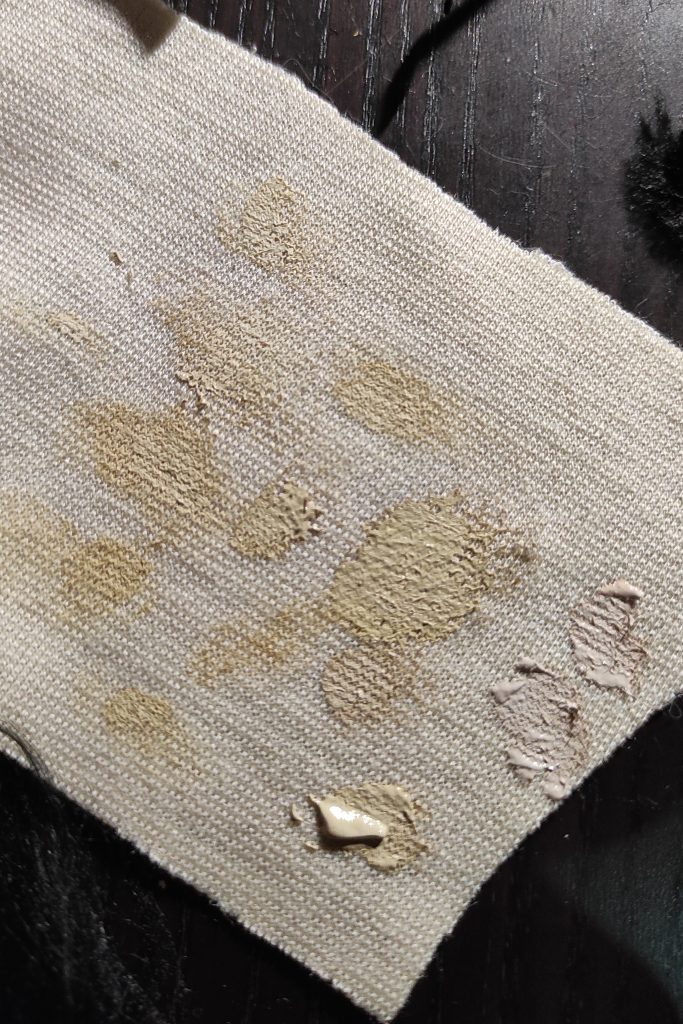
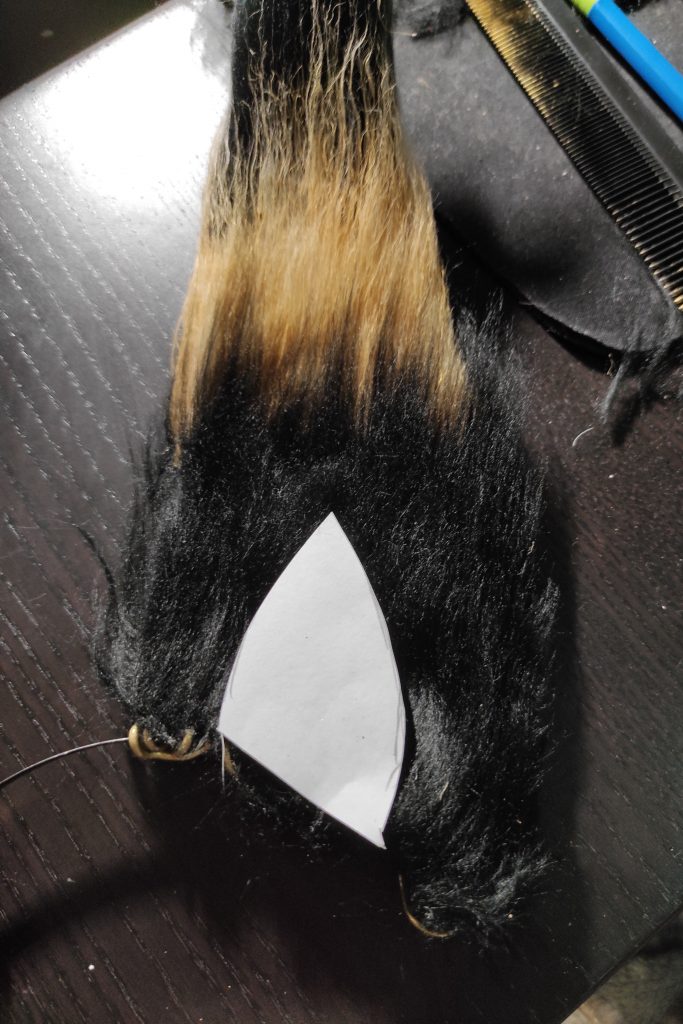
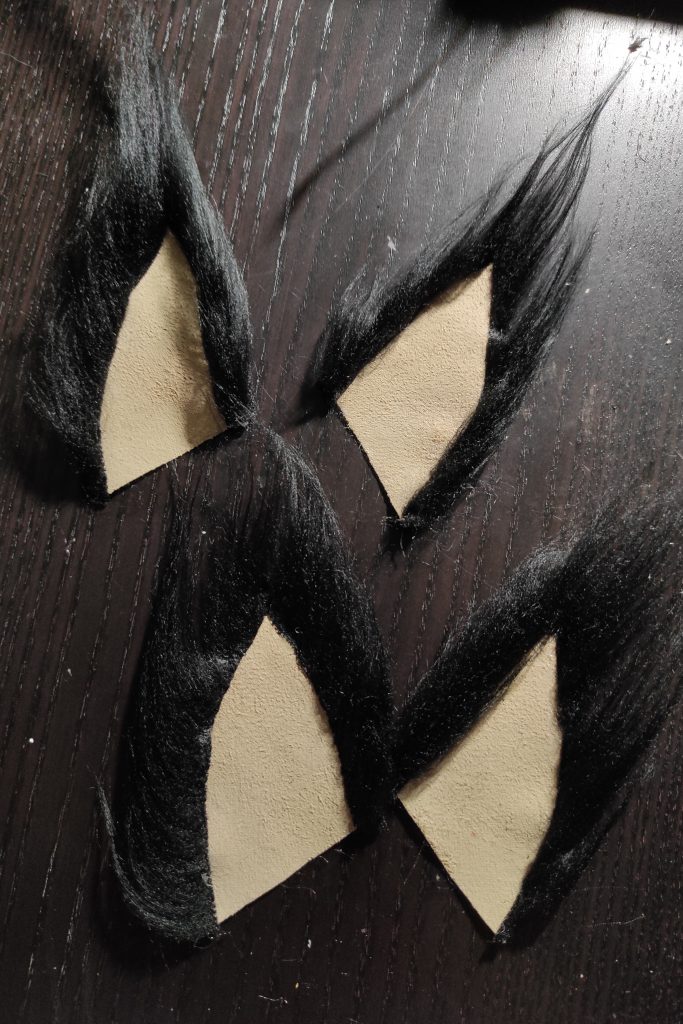
So that the change of material is not too sudden, I cut small strips of black fur that I fold (back to back) then glue all around my “skin”.
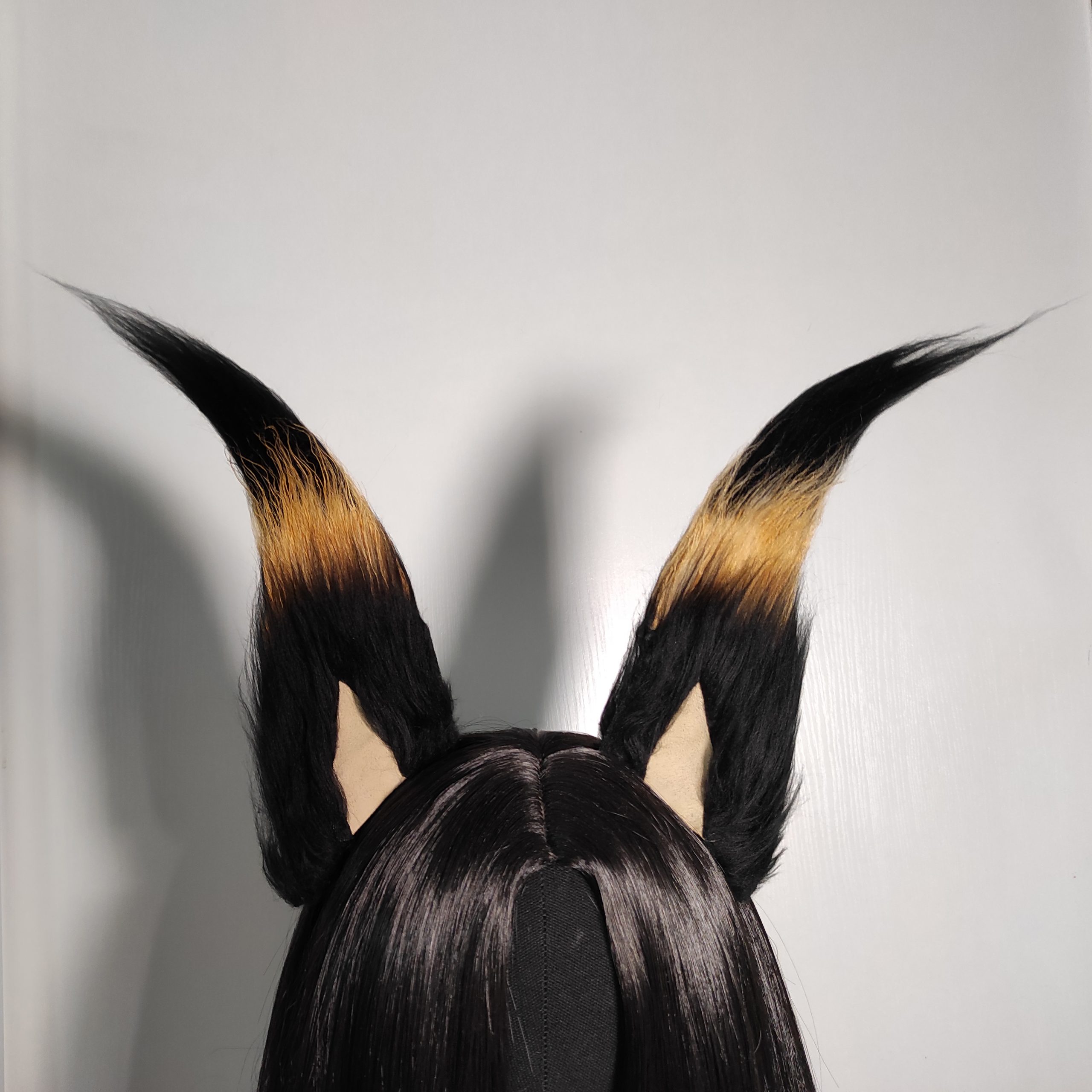
Once the skin part is glued to the ears, I wind the aluminum wire that protrudes from the bottom of the ears around a black headband in a discreet way and it’s done! ♥
And here is a beautiful pair of foldable ears at will!
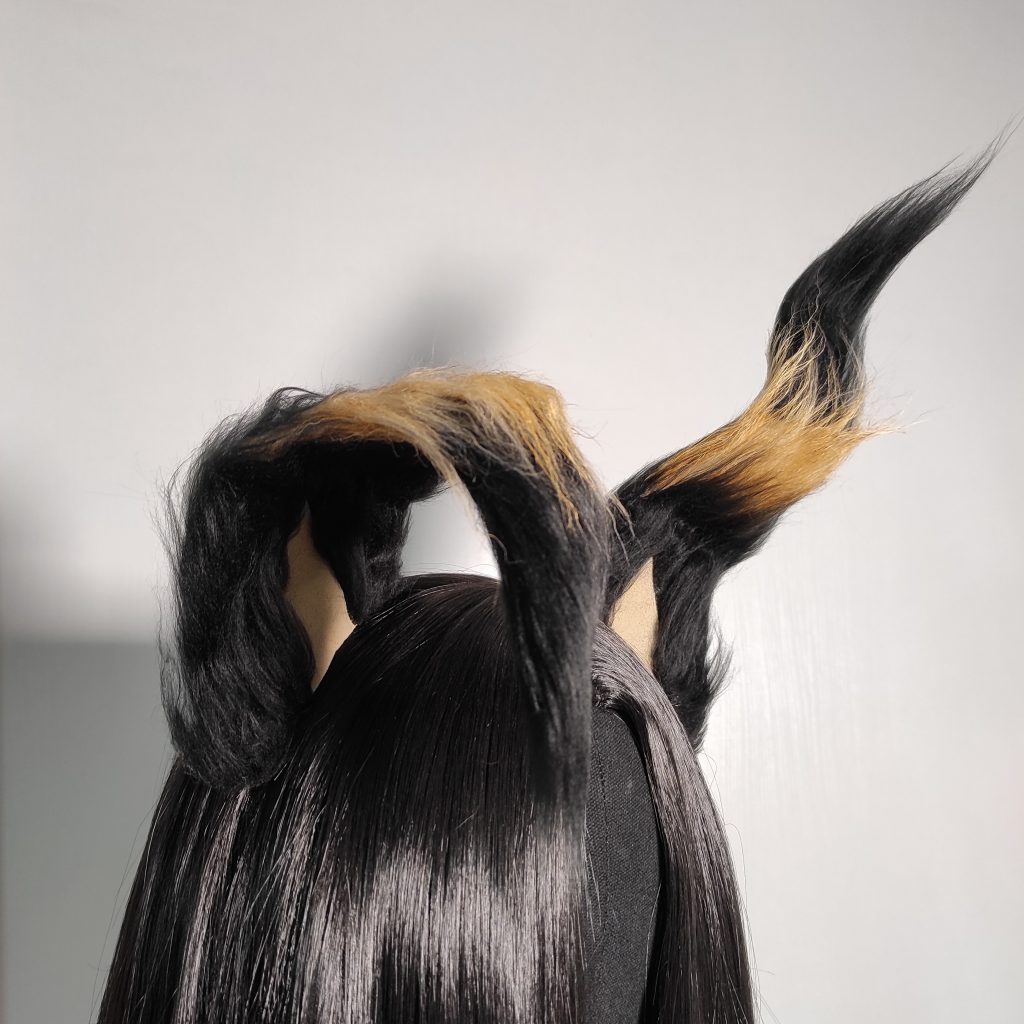
Tail assembly
For the tail assembly I first sewn the golden parts to their respective black parts, then the two sides together. I’m thinking of leaving an opening at the base of the tail so that I can add the padding afterwards!
Moreover, for this tail, I used Colas Normand‘s cushion & pillow stuffing fiber. What I like about their fiber is that it doesn’t get packed into fluff in the bag: it stays light and fluffy and doesn’t clump when in use!
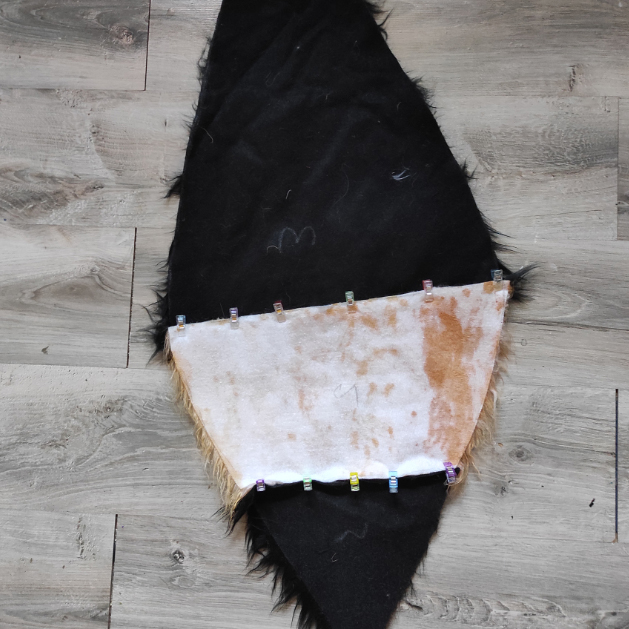
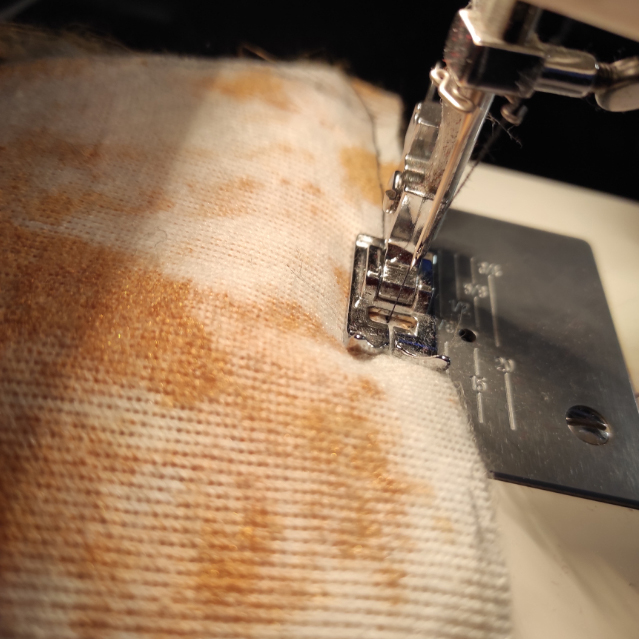
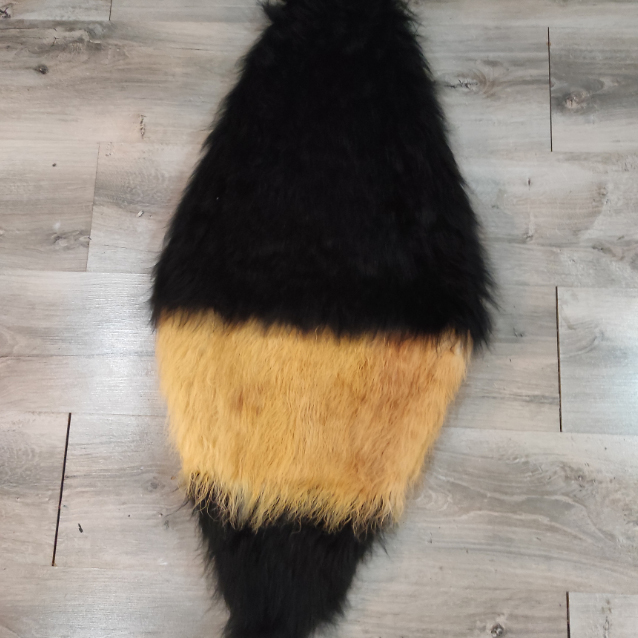
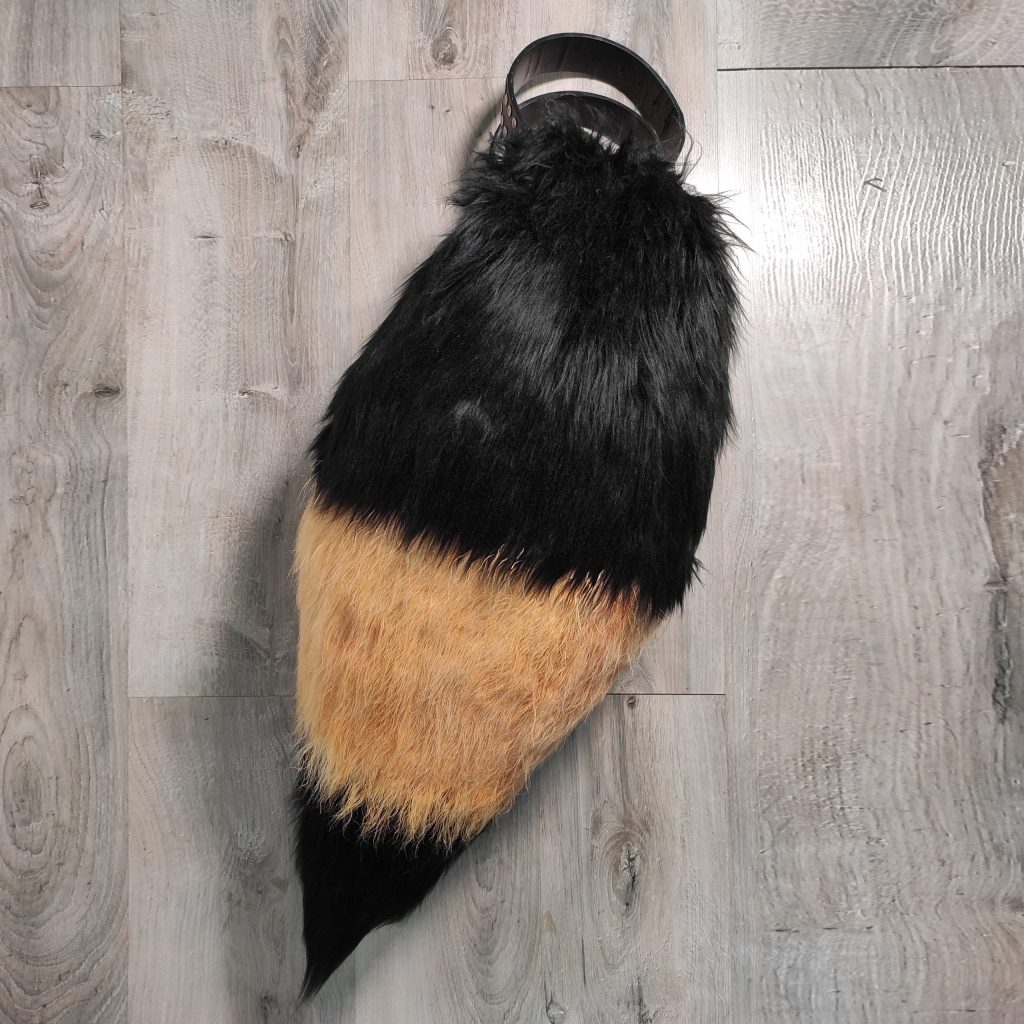
I then add a lot, A LOT of padding and then place an old belt at the end of my tail before closing the fabric around. A few hand stitches (to allow me to reopen the tail in case I need to remove/add some padding) and tadaa! ♥
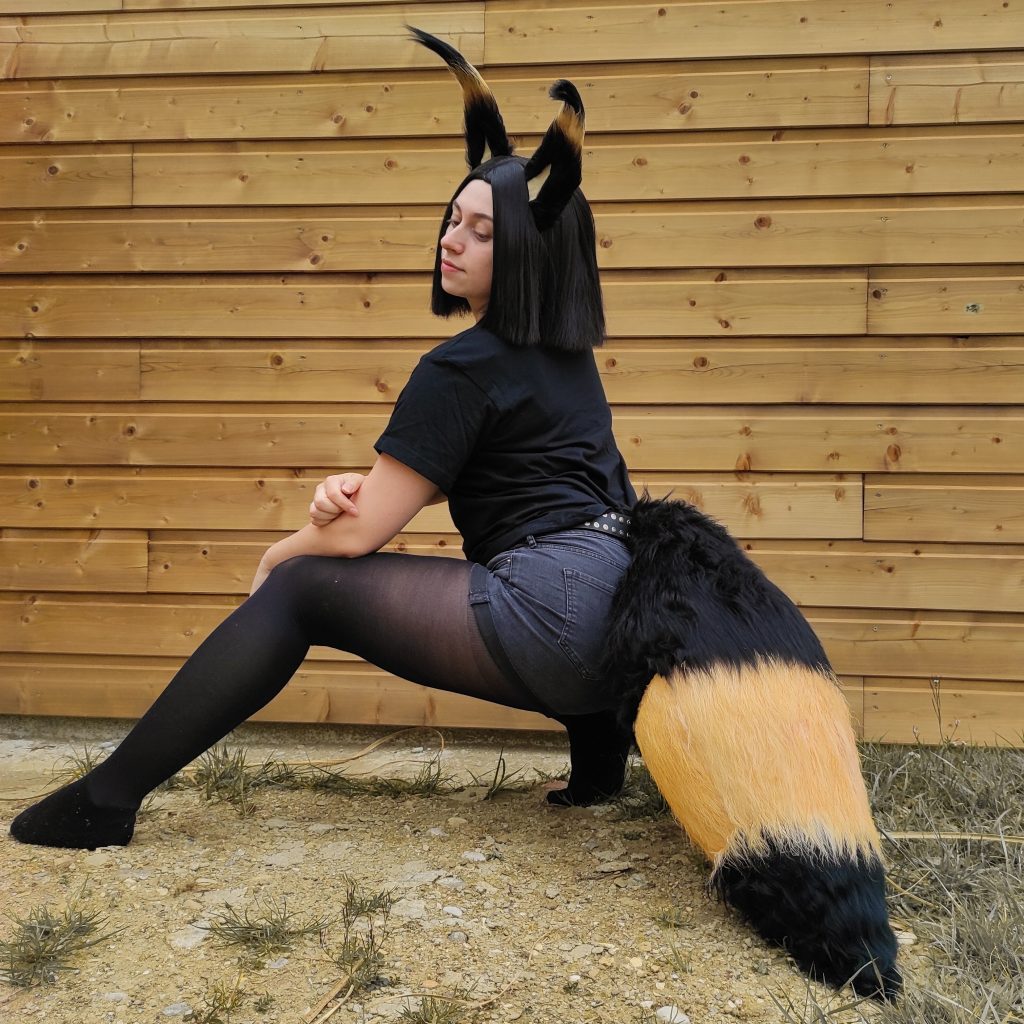
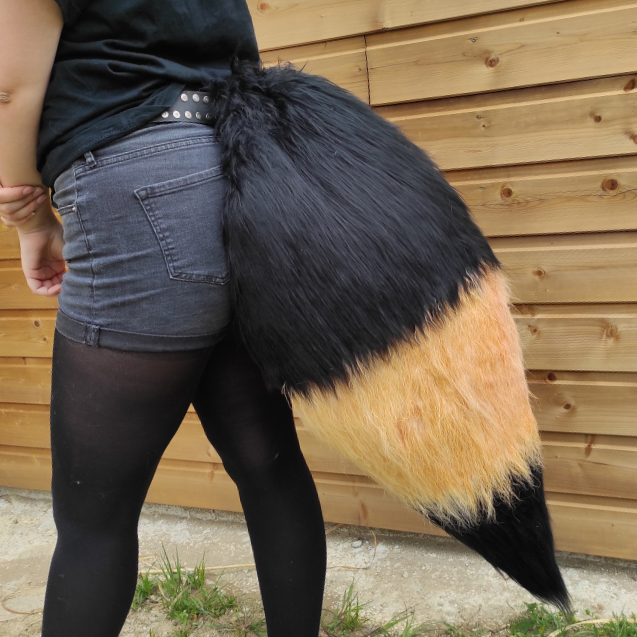
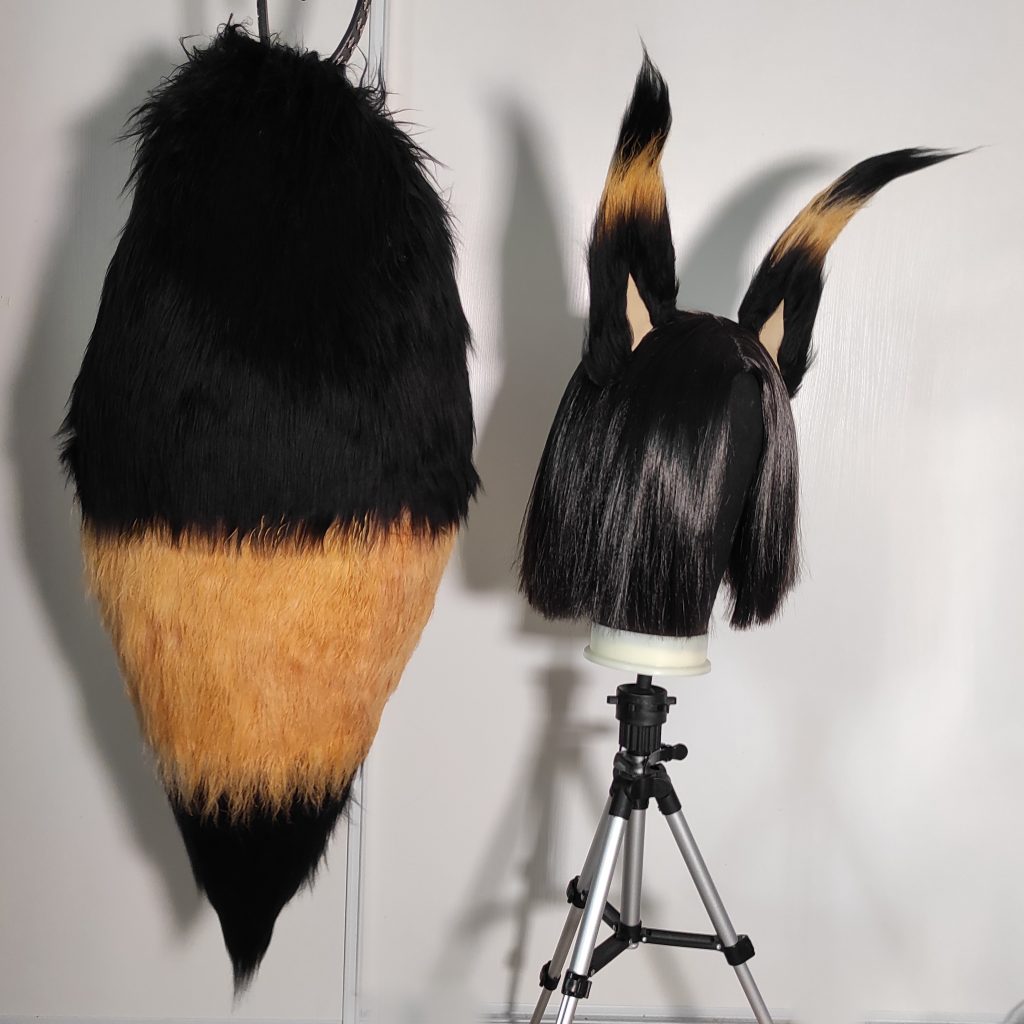
Here is the result once the set is worn! ♥
This is where this first part ends, thank you for reading it! ♥
This blog post is the very first time that I put all the design of one of my costumes in writing so feel free to give me a little feedback by telling me what you liked, what was interesting or not and even what it missed if it is the case! ♥
You can also give me suggestions for the next blog posts that you would like to see 😉